RAYHAN THOMAS
HITS THE PAID RANKS























Royal Montreal’s tree-lined fairways, elevated greens and closing water holes will reward shotmakers at this year’s Presidents Cup.

4 Season’s End
For some, they sign off with another season in the books. by harry grimshaw
6 Real Club de Golf Sotogrande
In the heart of Andalucía, this Robert Trent Jones design is the real deal. by harry grimshaw
voices
8 How Much Golf Is Too Much Golf? by jerry tarde
12 Journeys by christofer rahm with harry grimshaw
66 Golf, Eh?
by david mcpherson
22 Ryan Fox
The Kiwi reflects on the busiest 12 months of his career to date. by harry grimshaw
24 Rayhan Thomas Dubai-based Thomas is now going head first into the paid ranks of professional golf as he chats exclusively to us. by harry grimshaw
28 Glory’s Cost Will money ruin the chase for greatness? by jaime diaz
36 Astounding Andalucía
Over 120 world-class golf courses in this golfing hotspot in southern Spain. by harry grimshaw
44 What Are the Odds? How the incidence of golf feats compares across other sports. by lou riccio, ph.d.
48 Get Up and Down From Two Tricky Spots
An LPGA rising star demos crafty ways to save par. by ronni yin with kelly levins
56 From The Archives Bunker masterclass from Phil Mickelson in his best year on the PGA Tour. by phil mickelson with madeline macclurg
58 Split the Fairway Do these three things to drive the ball in play. by linn grant
60 Swing Sequence Min Woo Lee’s key move. by luke kerr-dineen
62 Seeking Forgiveness Why better players are converting to gameimprovement irons. by mike stachura
64 What’s in My Bag Patty Tavatanakit with tod leonard
14 The Royal Montreal Golf Club
The three holes that will decide the Presidents Cup. by derek duncan
18 Bolingbrook GC With just two events remaining on the 2024
LIV Golf League, it’s still all to play for in both the Individual and the Team standings. by harry grimshaw

20 Robert Trent Jones Golf Club
The United States currently hold a 10-8 advantage over Europe in the Solheim Cup. by harry grimshaw
54 Club News
A gallery of just a handful of the local winners in the amateur circuit in the region.
It might only be September, but the PGA Tour and LIV Golf do have one thing in common.
BY HARRY GRIMSHAW
WITH THE PGA TOUR season in the rearview mirror after the culmination of another dramatic season ending with the FedEx Cup playoffs, eyes will now turn to who will be gifted the Jack Nicklaus Award which is awarded yearly to the PGA TOUR Player of the Year as voted by the PGA TOUR membership. Are you team Scottie or team Xander? That seems to be the biggest debate currently… Are all of Scottie’s wins this season more impressive than Xander’s two majors?
We still have a few more months to go on the DP World Tour’s Race to Dubai though which concludes at Jumeirah Golf Estates in November. That top spot is being held firmly onto by McIlroy who is going in search of his sixth Harry Vardon trophy which looks like he’ll sail into the Dubai sunset with once again as he has already gained a healthy lead over Adam Scott in second spot. Remember, this is with McIlroy only having currently played seven designated DP World Tour tournaments.
Legion XIII going into the final Team event in Dallas.
Nelly Korda seems to have re-found her form that saw her move to World Number One and dominate at the top of the Race to CMBE Globe standings, after finishing in a tie for second in the AIG Women’s British Open, two-shots behind eventual winner Lydia Ko.
While across the pond, the Ladies European Tour enters its final quarter of their season, the Order of Merit is being closely held by England’s Bronte Law with her fellow Golf Saudi ambassador Charley Hull close behind.
September see’s The Solheim Cup back after only 12 months (thanks to covid) where the U.S.A attempt to win back the cup from the Europeans at Robert Trent Jones Golf Club in Virginia. While in the Men’s game we have The President’s Cup to look forward to, in which the U.S.A don’t usually have much to worry about. They have dominated this team event in the past against the Internationals, with victories in 12 of the last 14 editions… Not very positive reading for Mike Weir, the International Captain.
With just two events remaining on the 2024 LIV Golf League, it’s still all to play for in both the Individual and the Team standings. Jon Rahm overtook Joaquin Niemann at Greenbrier in the season-long points race, closing the gap by less than three points, 195.17 to 192.20. This is the first time any player other than Niemann, who won two of the first three tournaments, has topped the individual standings this season. Those two guys will battle it out for the 2024 Individual Championship at this month’s LIV Golf Chicago, while Brooks Koepka still has an outside shot at the bonuspaying third place. Once that is settled, we wrap up which players are finalised in the Lock Zone, Open Zone and Drop Zone… While in the Team standings, it’s a bit of a two-horse race between the Crushers and harry.grimshaw@motivate.ae @harrygrimshaw / @golfdigestme
As the summer temperatures start to cool down here in the Middle East, the amateur golfing scene is picking up pace again as we commence the club medals and stableford competitions. There were still some brave souls who have been capturing trophy’s across the past month in the hot and humid conditions, they can be found in our Gulf Club page towards the back of this issue!



editor-in-chief Obaid Humaid Al Tayer
managing partner & group editor
Ian Fairservice
editor Harry Grimshaw
art director Clarkwin Cruz
editorial assistant Londresa Flores
instruction editors Conor Thornton, Scott Edwards, Alex Riggs
chief commercial officer
Anthony Milne
publisher David Burke
general manager - production
S. Sunil Kumar
production manager Binu Purandaran
the golf digest publications
editor-in-chief Jerry Tarde
senior director, business
development & partnerships
Greg Chatzinoff
international editor Ju Kuang Tan
golf digest usa
editor-in-chief Jerry Tarde
general manager Chris Reynolds
editorial director Max Adler
executive editor Peter Morrice
art director Bill Specht
managing editors Alan P. Pittman, Ryan Herrington
playing editors Collin Morikawa, Jordan Spieth, Bubba Watson
head office
Media One Tower, PO Box 2331, Dubai, UAE Tel: +971 4 427 3000; Fax: +971 4 428 2266
dubai media city
SD 2-94, 2nd Floor, Building 2, Dubai, UAE Tel: +971 4 390 3550; Fax +971 4 390 4845
Email: motivate@motivate.ae
abu dhabi
14th Floor, Office 1406, Makeen Tower, 9th Street, Al Zahiyah, PO Box 43072, Abu Dhabi, UAE Tel: +971 2 677 2005; Fax: +971 2 657 3401
Email: motivate-adh@motivate.ae
saudi arabia
Regus Offices No. 455 - 456, 4th Floor, Hamad Tower, King Fahad Road, Al Olaya, Riyadh, KSA
Tel: +966 11 834 3595 / +966 11 834 3596
Email: motivate@motivate.ae
london
Motivate Publishing Ltd, Acre House, 11/15 William Road, London, NW1 3ER, UK
Email: motivateuk@motivate.ae

Real Club de Golf Sotogrande shining brightly in Spain
BY HARRY GRIMSHAW
SITUATED IN THE HEART of the Andalucía region of Spain, Real Club de Golf Sotogrande is considered as one of the masterpieces of legendary golf course architect Robert Trent Jones, placing it firmly in his top five favourite 500 courses that he has created worldwide.
Back in 1964, Sotogrande was in fact one of the first courses that Trent Jones designed in Europe. Located just 150 metres from the Mediterranean sea, Real Club de Golf Sotogrande is intertwined with a mixture of cork oaks, pine trees, palm trees, slick greens and an abundance of water, while still being able to provide the perfect challenge for both experienced and beginner golfers to enjoy.
The front nine, specifically the par three 4th and par four 7th, highlight examples of the risk reward factor that Trent Jones designed. This style is mirrored on the back nine with the par three 13th and par four 15th
The quality of the course is reflected by the pedigree of the champions over multiple decades. With the likes of Severiano Ballesteros, José María Olazábal, Roberto de Vicenzo, Sergio García, Padraig Harrington and Rory McIlroy all having won around here in the past, it’s no surprise that in October it return’s once again to the global spotlight for the 10th edition of the DP World Tour’s Estrella Damm N.A. Andalucía Masters.
To see more about what Andalucía has to offer, turn to page 36!

Tears and all, it takes a father and daughter to find the answer
BY JERRY TARDE
Agreat wind is blowing off the sea, a source of courage or pain for golfers. I’m reporting from the battlefield of links golf in a howling, moaning gale on the Southwest coast of Ireland at the 16th World Invitational FatherDaughter Tournament. My daughter Sam and I are not accustomed to playing every day, and this is rattle-bottom golf—every shot chased down, every gimme putted out—and we’re loving it. My old friend Sandy Tatum once said, “Put me vertical and give me the feel of seaside turf through my spikes and I could go on forever.” As the days and weeks now pass, I want to keep that feeling alive.
“Too much of a good thing can be wonderful,” said Mae West. I always preferred the sport psychology of Mark Twain: “Too much of anything is bad, but too much good whiskey is barely enough.” You could say the same about playing golf with your kids—it never gets old, even when you do.
This year was our first time in the tournament inspired by Jimmy Layden and Marty Carr of Ireland’s famous Carr Family. Joe B. Carr was the greatest amateur in Irish history. His offspring now operate a travel company, Carr Golf, and its daughter- and son-themed tournaments evoke the warm affection only a golfing dad can feel after 18 holes, a swim in the freezing Irish Sea and a pint of Guinness at midnight in the little pub they call “The Shebeen.”
I admit that I have the stooped posture and delicate hands of a shoe salesman. Pretty reliably I aim it right and hit a soft pull hook into the middle. I learned in these pages a long time ago, “Working the ball means finishing with the same one you start with.”
Not so for Sam, who pummels her

drives, as Bernard Darwin once described Nicklaus, “like a kicking horse.” Opposites attract; we make a great team. I had the passion but not the talent. Sam had the talent but not the passion. Should I have pushed golf more when she was younger?
We played our first round with Roddy Carr, Marty’s older brother who used to manage Seve Ballesteros. Roddy advocated equal measures of opportunity and neglect: “When Seve’s son Javier was about 10, I noticed he was hitting balls cross-handed. I said, ‘Seve, you’ve
got to correct his grip.’
Seve said, ‘No, Roddy. Some day his friends will tell him he looks stupid hitting it that way, and he will figure it out for himself and be better for it.’ ”
Sam has figured it out on her own. From the “up” tees that our daughters play, Sam’s ball can finish 100 yards past me on firm and fast fairways. In the alternate-shot competition, we used her drive on Waterville’s long

A MIGHTY CRAIC Participants in Ireland’s World Invitational Father-Daughter Tournament bond over golf and a swim in the freezing Irish sea.
par-5 fifth hole; then I bunted my 5-wood between the grassy dunes; with 130 yards left, Sam lofted an 8-iron that rolled straight into the cup. Dads know how to cry, and my eyes got a little misty seeing her make a net double-eagle.
It was the second time this week I wept. The first was when the tournament field took a morning swim in Ballinskelligs Bay with a water temperature of 57 degrees Fahrenheit. It’s a Carr tradition; they swim every morning of every month no matter where they travel. Between us, Sam’s the aquatic athlete; I’m more of a tea bag than a swimmer. You know the sea is cold if the air feels warm when you get out, but we’re loving every minute of this marathon.
Sam and I follow two practice rounds with three straight tournament days. It’s the most consecutive golf she has ever played, but she can’t get enough. “We’re coming back next year and bringing [my sister] Lauren,” said Sam. “Too much golf, when it’s with your dad, is just about right.”
Marty showed me an email he got from a friend of a friend who took an 11-day golf trip. Ted and Fred Heldring had organised their own father-son event as they’ve done every year for the past 12 summers. They often go to Bandon Dunes and play 72 holes in a day, not a typo. This July they went to Scotland for the first time and played from dawn till dark: 36 holes the first three days, then 54 holes for five consecutive days, then 36 twice, and 54 on their last day. Ted, 62, and Fred, 32, walked 28 rounds in 11 days, carrying their own bags every round, except for two when they took a caddie. Fred sorted out the tee times and drove their rental car. They played Gullane (1, 2 and 3), North Berwick, Elie (five times), the Old Course, the New (four times), Castle, Jubilee (twice), Lundin Links, Leven, Crail, Panmure, Carnoustie, Cruden Bay, Dornoch (twice), Nairn, Golspie and Brora. Marty said, “In 35 years in the golf travel business I’ve never seen such an aggressive itinerary.”


‘The magic, I learned from my rounds with Sam, is not about how much you play or where you play. It is all about who you play with.’
Who are these guys? Ted spent most of his career at JP Morgan before retiring to teach finance and commercial banking at DePaul University in Chicago. Fred is a financial consultant for Ernst & Young living in Philadelphia. They seem like normal guys. They could be you.
I called them from Ireland to ask what their secret was? Ted said they
changed their socks and shoes after every round. That’s a lot of socks, I thought. It had to be something more. Their highlight, they said, was playing the Old Course at 6:40 a.m. on a Saturday with two Royal and Ancient Golf Club members, who invited them into the storied Big Room for a couple of Bloody Marys. They said, “It was a magical experience.”
The magic, I learned from my rounds with Sam, is not about how much you play or even where you play. It is all about who you play with.
Fathers playing links golf with sons or daughters get a glimpse of their mortality while still feeling they can go on forever, and because you know you can’t, my advice is to do it now.

















It’s obviously a great name to have but at the same time, I’m trying to build my own path.
BY CHRISTOFER RAHM WITH HARRY GRIMSHAW
I’ VE GROWN UP IN A LOT OF DIFFERENT COUNTRIES, Sweden, Spain, America and one of those places was Dubai in the United Arab Emirates. I spent three years there, which included my last two years of high school at the American School of Dubai. It was just a great place for golf and a great place to improve my game. So that’s where I really decided to take the next step to pursue it as a playing career.
keep it going day-by-day and just keep working on my game, keep working on my weaknesses and then the results will hopefully talk for themselves in the end.
● ● ●
AGE: 26
The facilities and the courses, in the UAE are all just amazing. I was a member at Jumeirah Golf Estates, then I had all the amateur tournaments to play that the Emirates Golf Federation put together. They did a great job in trying to raise the game in the area, both by having big tournament’s on the DP World Tour and Challenge Tour, then also for the amateurs and the younger guys to play in. We used to travel around the whole country and play all the best courses, Abu Dhabi National , Dubai Creek, literally everywhere.
●
PRO WINS: 4
in Arkansas State. My sister went to University of Pennsylvania , so she helped me in the process. Going to Arkansas State to peruse my golf career was a great was to keep building on my steps to try get to the highest level.
●
In the amateur tournaments the standard was really good. I ’ ve great memories The Els Club where I had a had a first round of six-under par, and then I played against a guy in the last round who had been on the Korn Ferry Tour. Beating him in a playoff was a huge building block for me especially being so young still. I had a few other successful tournaments in the region and I won the order of merit a couple times. It all definitely helped me grow my game.
● ● ●
I’d always grown up studying in an International American School, so for me it was a pretty obvious decision to head over to the states where I enrolled
After I graduated, I had a pretty steady year on my first year on the Nordic Golf League. I wasn’t anywhere close to winning but it was just a matter of putting in the work and trusting it. That’s what I did this year and in the end it just became a receipt for my results in the tournaments by getting three wins to get promoted onto the Challenge Tour.
● ● ●
When I started on the Challenge Tour in May initially it was all about building up my experience on the Tour. But in my second event out in Spain, I finished in a tie for third place and I felt like I belonged out here. It’s a lot easier to play out here when you feel like you deserve a spot. When you’ve actually put the work in and the results you’ve produced merits you a spot. So, now even though I’m a bit more confident, I’ve just been taking it tournament by tournament. Obviously the guys out here are very good, but they’re good anywhere you play. So in order to win, you still have to do the same stuff. Just
My goal gets updated all the time. In the beginning it was just to get some experience. But now I have a realistic chance of getting into the top 45. So, my goal is now just to be able to play all the events I can and get into China. Then if I make it all the way to Mallorca for the Grand Final in November then it will definitely go down as a great year. If I don’t, then I just have to keep working.
● ● ●
Dubai will always feel like home for me, I still have a lot of friends out there. So I’ll go back during the winter time and play in a league called The Lions Den at The Els Club which is run by The Crippler. It’s a great, competitive league where a lot of pros come together during the winter to push each other. There’s a lot of players out here on the Challenge Tour who come and play there as well. So I’ll for sure go back to Dubai, I look forward to it every year.
● ● ●
I knew you wanted to ask about my surname! It’s kind of funny because, even though I’m Swedish, I actually grew up in Spain for 10 years. So, for a long time people always thought I was Spanish and people used to think I was connected to Jon Rahm. When my sister was over in the U.S. everybody used to ask her about it, and she would say that we were that we were distant cousins as a joke. It’s obviously a great name to have, but at the same time I’m trying to build my own path with that name and connect it to my own successes.


The three holes that will decide the Presidents Cup
BY DEREK DUNCAN
TDUNKING
Water on the final five holes of Royal Montreal’s Blue Course, including the 15th, 16th and 17th (pictured), presents the opportunity for Presidents Cup players to splash balls and sink matches.
HIS SE PTEMBER WHEN the Presidents Cup returns to Canada for just the second time, the International team will be looking to put up a better fight than the 14½ to 19½ loss to the United States the last time the event was played at The Royal Montreal Golf Club’s Blue Course, in 2007. The Blue won’t offer many different opportunities for improvement: It remains a tight, stringent, shotmaker’s design with treelined fairways, thick rough and small elevated greens. Though founded in 1873 and purported to be the oldest in North America, the club has only been playing its current courses, the Blue and Red, since 1959 when it moved from a location in historic Montreal to Ile Bizard four miles west. Dick Wilson built both courses on what was mostly farmland and apple orchards, stuffing the Blue full of doglegs and deep greens requiring precision aerial approaches. Rees Jones, who remembers walking the property as a boy when his father, Robert Trent Jones, interviewed for the job, remodeled the course in 2004 and 2005, though he was respectful of Wilson’s tenets of mid-century architecture (only the 12th and 13th holes were fundamentally altered). Jones and design associate Bryce Swanson have been back to make minor tweaks, but success at the Blue will still come down to how the players navigate the formidable closing stretch where water lurks on the final five holes. Here are three late-game land mines that will help determine the matches.

400 YARDS, PAR 4
Four blowout matches ended on the 14th hole in 2007, including an impressive 5-and-4 win by Vijay Singh and Stuart Appleby over Tiger Woods and Jim Furyk in Friday’s fourballs. Studious viewers might recognise the Blue’s 14th as a mirror image of another popular Dick Wilson hole, the 18th at Bay Hill. A lake extends the length of the fairway on the left beginning at 250 yards and continues up to the front of a shallow green that hooks left around the water. The landing area is just 25 yards across, so most players will hit less than driver for safety and approach the green with 9-irons or wedges. New front tees were created during the remodel and could be used to make a 310-yard hole that coaxes desperate teams into attempts to drive the green.

448 YARDS, PAR 4
If the 14th is reminiscent of the closing hole at Bay Hill, the 15th follows a similar strategic construct of another classic Wilson finisher, the 18th at Doral’s Blue Monster. A decision must be made on the tee: Lay up to the wide section of the fairway at the 250-yard mark leaving a long approach into a deep, skinny green bracketed by bunkers or push further down the hole by carving a drive around trees to an ever-narrowing landing zone with a lake cutting in from the left. Any drive hit too straight or too far left will be in the water. The green used to be set beyond the water but was pushed back 40 yards to give members safe harbour short, and the putting surface is cut into distinct pinning sections by prominent steps and swales.
Nearly half of the 34 matches in 2007 (16) were closed out on this par 3. Playing to a similar length as the seventh, the 17th green was moved closer to the water on the right in 2004. Ordinarily a wedge or short iron for the professionals, the hole can be stout when the prevailing crosswinds blow from the left. Front hole locations between two bunkers are tight, but players will be able to get the ball close working off a backstop. Another bowl to the back left of the green will also help collect balls and swing matches with birdies when pins are set there. The back-right hole locations near the lake will make for nervous, do-or-die tee shots, especially for players or teams trailing in their matches who need to go flag hunting.



With just two events remaining on the 2024 LIV Golf League, it’s still all to play for in both the Individual and the Team standings
BY HARRY GRIMSHAW
LAST TIME OUT in Greenbrier, Brooks Koepka pipped Jon Rahm in a play-off for his fifth Individual title. But despite coming up short, Rahm overtook Torque GC Captain Joaquin Niemann in the season-long points race by less than three points, 195.17 to 192.20. It’s the first time any player other than Niemann, who won two of the first three tournaments, has topped the individual standings this season. Those two will battle it out for the 2024 Individual Championship at this month’s LIV Golf Chicago, while Koepka still has an outside shot at the bonus-paying third place.
Host for LIV Golf Chicago is Bolingbrook Golf Club, designed by architect Arthur Hills and partner Steve Forrest, the course is located just 30 miles from downtown Chicago, and features a 156-yard island green on its signature 15th hole.
The 7,104-yard layout offers plenty of rolling fairways and elevated greens, as the course winds it’s way around seven different lakes. It has played host previously on the PGA Tour’s Forme Tour in 2021 during the Covid-19 pandemic, but now takes a leap up to this year’s LIV Golf Chicago event, where it will be the stage for where we crown the individual champion.
We then can also confirm which players are finalised in the Lock Zone, Open Zone and Drop Zone…

Once we wrap up the Individual title in Chicago it’s onto Dallas for the Team Championships where we will have a better look at which team is leading the standings.
All 13 LIV teams will compete in the 2024 LIV Golf League Team Championship at Maridoe Golf Club, with the top three receiving first-round byes and automatically qualifying for Saturday’s semifinals (that is already confirmed with the Crushers and Legion XIII who mathematically have already make it through prior to Chicago).
The remaining 10 teams will play in five quarterfinal matches on Friday, with matchup determined during a live drawing of team captains during tournament week. The five winners advance to the semifinals, with the semifinal winners competing for the team title on Sunday. The winning team taking home $14 million.
Maridoe Golf Club is situated north of Dallas and having only opened in 2017, it has gained a strong reputation for it’s strong layout of length, well placed bunkers and undulating greens.
A different venue from last year, but still Bryson DeChambeau, Paul Casey, Charles Howell III and Anirban Lahiri took the Crushers to the team title, as they look to do the double again this year…. Which if you didn’t know, is in Bryson’s home town.


The United States currently hold a 10-8 advantage over Europe in the Solheim Cup
BY HARRY GRIMSHAW
having previously played host to the men’s President’s Cup in 1994, 1996, 2000 and 2005, the challenging Robert Trent Jones Golf Club is now turning its hand to the women’s equivalent, the Solheim Cup, for the 19th edition staged on the 13th - 15th September.
Robert Trent Jones Golf Club (RTJ), which opened in 1991, was by no surprise founded and designed by golf
course architect Robert Trent Jones Sr. who considered the layout to be one of his finest designs.
“We are honoured and excited to bring the 2024 Solheim Cup to Robert Trent Jones Golf Club,” commented LPGA Tour Commissioner Mollie Marcoux Samaan.
“RTJ has a strong tradition of hosting world-class international competitions, and we can’t wait to add


the Solheim Cup, one of the flagship events in women’s golf, to the list.
“Playing the Solheim Cup on this magnificent golf course near our nation’s capital will provide the perfect backdrop for these elite athletes to battle for the Cup. I have no doubt that the club and its members will serve as wonderful hosts, and that fans from around the world will enjoy an experience of a lifetime.”
With the players for both sides having either qualified or gaining a captains pick, the Europeans will once again be looking to retain the Cup after tying 14-14 with Team USA at Finca Cortesin last year. Both sides won five matches and tied two to earn six total points in the singles, as home favourite Carlota Ciganda closed out Nelly Korda on the 17th green to capture the deciding point for the European team.
SIGNATURE HOLES:
HOLE 11: A par 4 with a dogleg left that requires precision both off the tee and on the approach to a wellguarded green.
HOLE 14: A par 3 that plays over water, demanding accuracy to avoid the hazards.
HOLE 18: A dramatic par 5 finishing hole that has water in play, offering risk-reward opportunities that could be crucial in match play.
Ryan Fox Exclusive
The likeable Kiwi chats on his connections with the Middle East, his upcoming defence at Wentworth, the balancing act of two global tours, being a three-time Olympian and his relationship with The President’s Cup.
WITH HARRY GRIMSHAW
Ryan, your win in Ras Al Khaimah in 2022 was at the time, your biggest win outside of Australasia. How significant was that win at Al Hamra for you back then?
It was a really big win for me.
I’d had a tough run through Covid in 2020/21 and had a chunk of time off at the end of 2021. After a slow start in Abu Dhabi and Dubai I was a looking forward to heading back to Ras Al Khaimah.
I remembered playing well there on Challenge Tour and I liked the course. We were then there for two weeks during Covid, the first week I tweaked my back and missed the cut, but it was sorted for the second week and played great all week.
It was certainly an uncomfortable Sunday as I started with a huge lead and that all but disappeared early on Sunday, but I was really pleased with how I fought back through the middle of the round and I closed with a more flattering winning margin than it felt like out there.
To win so early in the season was great for the confidence and took the pressure off for a while and It really set me up for what happened the rest of 2022 and 23.
Keeping it in the Middle East, you partnered with the Arena Group last year, how special is it to have been associated with them especially with the relationship they have with golf tournaments here?


It’s been great to be partnered with a company like Arena. They are an amazing bunch of people to be involved with and obviously their business is huge in the world of golf, and in the Middle East.
It all actually started in the Middle East from a Q&A visit to one of their chalets during the Dubai Desert Classic and it’s been a great partnership ever since.
From my point of view having an understanding of what Arena Group does especially in the golf space has really opened my eyes to what work goes on behind the scenes at tournaments.
As players we tend to take for granted all the temporary structures (Grandstands, Hospitality Etc.) as they are just part of an event, but I’ve really enjoyed learning a bit about how it all comes together and how much work goes on in a very short space of time to get it all ready for us to play at a venue.
This September you are returning to Wentworth as the defending champ, how special will that be? You became not only the first Kiwi to win the flagship event on the DP World Tour, but it was your first Rolex Series title, and with an added bonus of having your family in tow. Honestly, it’s still a bit surreal to me what happened last year.
It’s such an iconic event on the DP World Tour and to be able to head back there as DC this year will be an amazing experience. To win my first Rolex Series title was a big one. I’d gone close a couple of times and it was nice to get over the line, especially it being the flagship event for the DP World Tour. It was probably the most unexpected one for me as I had generally never played very well at Wentworth.
To have the family there was pretty special too. Not sure the kids were quite old enough to understand what happened, but we had some pretty cool photos with them and the trophy.
You really brought it home on the back nine with a sixunder par 31. What are your overriding memories from that back nine, especially with the calibre of players at the top of the leaderboard?
That back nine is probably the best nine holes I ever played. I honestly thought I’d ruined my tournament after making seven on the third hole and I was just playing for a place after that.
I steadied the ship with a couple of birdies on the front nine and then just got hot on the back. I basically hit every shot exactly where I wanted to hit it, except for the tee shot on the 15th, which still wasn’t bad after a big delay.
I was so calm that whole back nine too and didn’t think about anything else except the golf shots and I really wish I could find that place a bit more.
I didn’t even think about who was on the leaderboard until I saw the leaderboard while waiting for the prize presentation. I actually surprised myself when I saw the leaderboard and realised I’d beaten a lot of the Ryder Cup team down the stretch.
Would you say that win completely changed your season and the rest of 2023 on the DP World Tour?
Completely. I’d say it changed my career pretty much. Obviously, it’s such an iconic event with some amazing names on the trophy. But it also locked up my status for a while and locked up a top 10 Race to Dubai Rankings finish and with it a PGA Tour card.
On that, how have you found that transition to the PGA Tour, and the balancing act of managing two tours? Yeah, it’s been tough. I did a bit of it the year before and I was away a lot leaving the family at home and I missed a lot of things with the kids.
This year we decided to travel round the U.S. with the whole family. We did 20 weeks with the kids and by the end of it my wife and I were almost broken!
We didn’t have a base, and I played a lot which didn’t help but we had some good times too. My wife was a trooper managing to keep everything organised while on tour and the kids handled it pretty well, but we will definitely do it again a little differently next year with a base and hopefully less travel for the family.
You’ve have Jamie Gough as a coach for a few years now. How beneficial has he been over that time? Looking in, there is something that bonds you guys together really well.
Having Goughie on board has been really good the last two and a half years.
We get along really well (and did so before we even worked together) and having someone to keep the swing in check week in week out has been huge for my consistency.
We have worked consistently on a few things I’ve fought my whole career and that has paid off, and it felt like we never really tried to reinvent the wheel with my swing. It’s unique and I do a few funky things but I also do a lot of good things and I think we have gelled so well right from the start. Meeting Goughie has allowed me to keep my idiosyncrasies, while working subtly on getting things better and more consistent.
You notched your third Olympic Games this summer, would you class yourself as a veteran when it comes
*
I don’t feel like I’ve played well enough this year to get a pick unfortunately. We will see what happens, but maybe 2026 will be my year.
to competing in the Olympics? How contrasting have those three different games been?
Not sure I ever thought I would be an Olympian growing up let alone a three-time one. So I guess I am a veteran. I haven’t played overly well at the three I’ve been to, but getting to represent your country is something that I grew up wanting to do, and in golf you don’t get to do it that often. So to do it three times at the Olympics is very special.
They have been three very different games that’s for sure. Rio was a great experience and it was a great honour to make that team from being on the Challenge Tour. Tokyo was a tough week overall, just so many Covid restrictions and we didn’t really get to experience what the Olympics has to offer. Then Paris just now was unbelievable really. The crowds were amazing and the atmosphere on the course I think caught everyone by surprise.
It really felt like golf found its place in the Olympics in Paris and hopefully it only gets bigger.


Is this year’s President’s Cup on your mind, especially after missing out in 2022? Yeah it was a huge goal at the start of this year to get in. I felt like I gave myself a good chance in 2022 but obviously didn’t get a pick.
I don’t feel like I’ve played well enough this year to get a pick unfortunately. I started the qualifying period really well but this year hasn’t been what I would have liked. We will see what happens, but maybe 2026 will be my year.
Finally, a big push for you this season must be to qualify for the final two events on the DP World Tour in Abu Dhabi and Dubai. What does it mean to play in those elevated events at the end of the season?
Yeah, they are two events I’ve always enjoyed playing although my results don’t really show that. I’ve had two goals at the end of the season. First and foremost is to keep my PGA Tour card the second is to qualify for the DP World Tour playoffs at the end of the year.
It’s going to require some tough scheduling decisions and some good play, but I’ve got a bit of a break now so hopefully come back refreshed and in form for the latter part of the season on both tours.
Rory McIlroy, Rickie Fowler and Viktor Hovland have all sung his praises. Now the Dubai-based prodigy has returned to familiar shores since turning pro, in this his first exclusive interview
With Harry Grimshaw
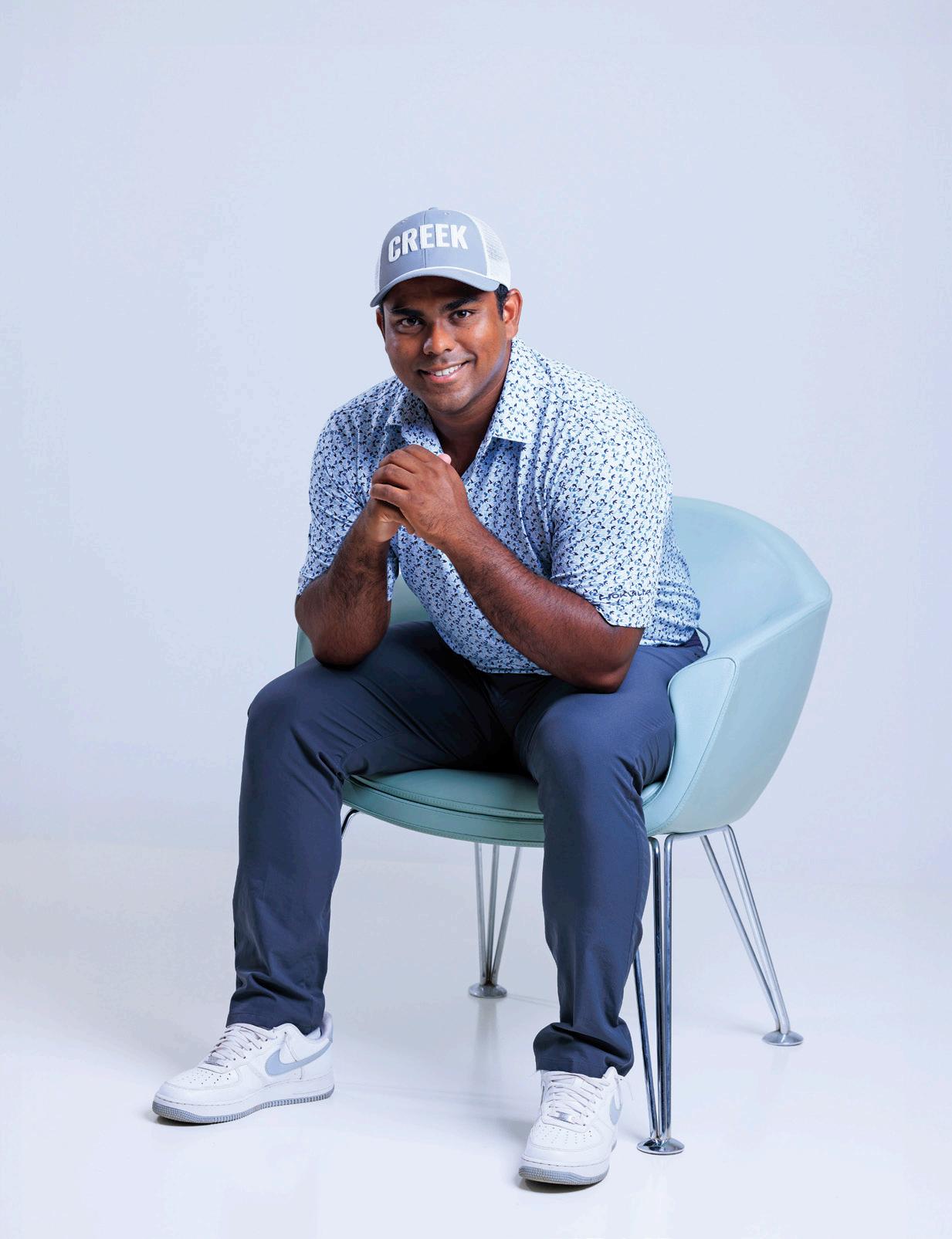

RAYHAN, IF MY MATHS IS RIGHT IT’S BEEN AROUND SIX YEARS SINCE WE’VE CAUGHT UP IN PERSON. HOW HAS THE “LIFE OF RAYHAN” BEEN? It’s been a roller coaster for sure. The last six to seven years have been a real grind. A lot of anxiety, a lot of stress, a lot of bad golf, and some good golf. But also a lot of self-discovery and a lot of good things have come out of it all.
IT MUST BE COMFORTING BEING BACK IN DUBAI AND SURROUNDED BY ALL OF THE POSITIVE MEMORIES? It is. I’ve got a lot of good memories especially at Dubai Creek, Emirates Golf Club and The Els Club from my junior days.
The best part of growing up here was I had my so many of my friends and family here. I was in a great group of juniors growing up playing golf together, and we had a great time whenever we headed out to the golf course.
We had a good Indian community down at the Creek that I used to play with in junior opens and the par three series. We used to take it so seriously when we played these competitions as kids!
We used to go all over the U.A.E. I can remember driving to Al Ain to play a junior open and Yas Links to play in a par three competition. It was just so much fun for us to do that which made it feel so special. It used to be the most fun part of my day!
So all those memories come flooding back. It kind of reminds me why I enjoyed playing this game, it helps you put things in perspective.
YOU’VE BEEN LUCKY ENOUGH TO RUB SHOULDERS WITH BIG NAMES HERE IN PRACTICE ROUNDS AND TOURNAMENTS. HOW MUCH DID YOU TAKE FROM THAT TOWARDS YOUR DEVELOPMENT? It was awesome. When I was playing the then European Tour events out here early on, it was good to get a little taste, a little perspective on what I needed to do to get to where they were and see how my game matched up to theirs.
When I played in my first Dubai Desert Classic in 2017, I thought to myself, I want to do that again! The atmosphere was addictive. Obviously the Dubai Desert Classic is an amazing event and one of the premier Rolex Series events on the schedule. So to play that and get a taste, I was like “wow” I definitely want to be back here.
I was lucky enough to be able to practice with Rory that year as well, so that was a huge highlight for me. He is easily the best player I’ve played with.
Then also, I think in my first Dubai Desert Classic I even played with Anirban Lahiri and SSP Chawrasia, so that was an all Indian group which was very special.
YOU ARE STILL CONNECTED TO DUBAI CREEK GOLF AND YACHT CLUB, HOW SPECIAL IS IT TO HAVE THEIR SUPPORT THROUGHOUT YOUR EARLY CAREER? Amazing. They’ve been really good to me. The Creek has a pretty wide spread in terms of associated clubs in the Dubai Golf and VIYA Golf umbrella. So I can also play at Emirates Golf Club, Jumeirah Golf Estates, Yas Links, Yas Acres and Saadiyat Beach Golf Club, which gives me the ability to be able to play and practice out here without having any worries. So that’s huge for me. I’m extremely grateful to all of them, while also not forgetting The Els Club as well for helping me out.
I WAS JUST ABOUT TO ASK YOU ABOUT THE ELS CLUB. YOU WERE OF COURSE COACHED THERE BY JUSTIN PARSONS AT THE CLAUDE HARMON III PERFORMANCE GOLF ACADEMY, ARE YOU GUYS STILL IN TOUCH? We are. He’s going to be a mentor for me forever as he is somebody that I respect so much, and I’ll take always listen to his advice. He’s an extremely smart coach. So, I’ll always keep in touch and seek his advice as much as I can. He’s a good friend of mine.
MEMORY LANE
Rayhan featured twice as Golf Digest Middle East’s cover in the past, thanks to his top amateur career.

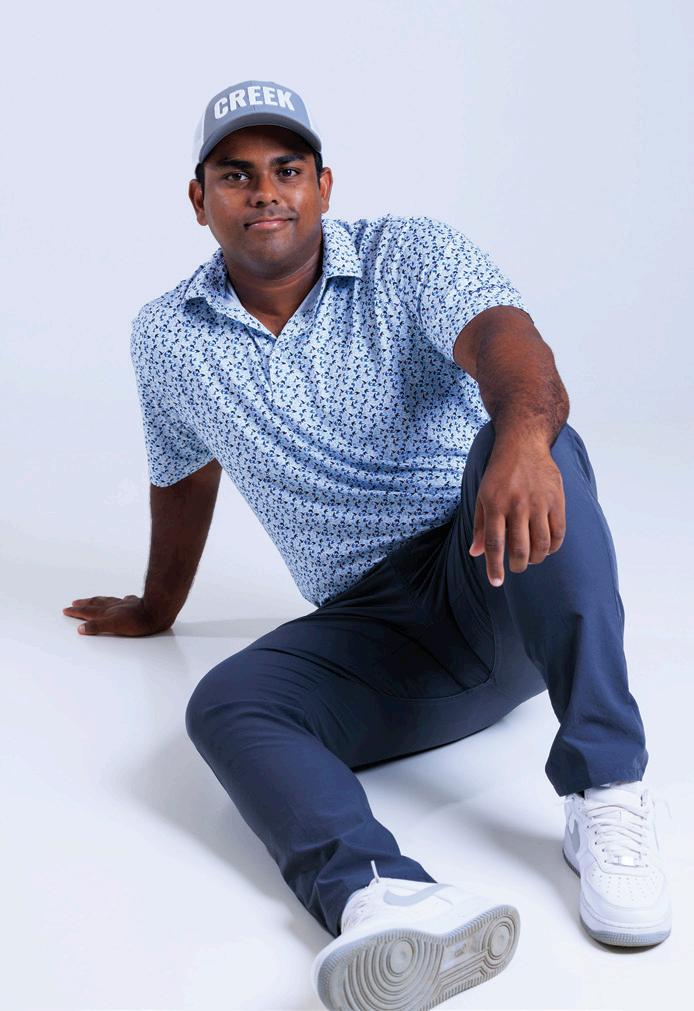
YOU TOOK THE DECISION TO HEAD STATESIDE AND TO OKLAHOMA STATE UNIVERSITY (OSU), HOW INTEGRAL WAS THAT IN YOUR PROGRESSION? Huge. At the time I was unsure about whether I had enough game to play professional golf or not. So going there gave me a little bit of time to figure out whether I could do it and what I needed to do to get better. But at the same time, I was really struggling with my game. So it gave me a little bit of a buffer to be able to go to college and get access to great coaches, facilities and competition to see how my level progressed.
It helped with the bunch of guys that built our team. It was a pretty small team in my first year. I think we had four freshmen on the team of eight. So those three, me and three of the other freshmen got very close both on and off the course.
Obviously Eugenio Chacarra was on the team, he’s now on LIV Golf. Austin Eckroat was one of my guys and he’s won on the PGA Tour. Then Rasmus Neergaard was on the team as well and he’s smashing it on the Challenge Tour, he’s already nailed on his DP World Tour card. All of us were pretty close and pretty tight knit, so you want to see them all do well out on Tour.
YOU WERE OPEN ABOUT YOUR SETBACKS AND STRUGGLES IN YOUR JOURNEY WHILE AT OSU, HOW TOUGH WAS THAT PERIOD? Oh, it was extremely tough. It was just tough because I’ve never really felt struggle when I was a kid. And you don’t really think about that, those kind of things. So when it first started coming about where I couldn’t really hit my driver very good and it just continuously got worse, it was a really tough time and something I hadn’t experienced before.
And I probably don’t know if I went through it the right way, but we’re here now and we kind of learned how to try and figure it out. Now I think I have a much better understanding of myself and my game. If it comes back and I start struggling again, I know that I’ve been able to beat it and I’ll continue to do the same.
BUT YOU’VE GROWN AND COME OUT THE OTHER SIDE, THAT MUST SHOW YOUR STRENGTH AND BELIEF? Absolutely, that’s what I told myself. I gave myself last year and said, “Give it 100% and whatever happens, happens. But just know that you didn’t leave any stone unturned.”
So that was what I did. I gave it 100% and said there’s no excuses for me, if it doesn’t work out, it doesn’t work out and that’s okay. But I then at least know that I gave it 100%. Now it’s good to see my game starting to get better and be in a good place and hopefully I will continue to get better.
TOPPING IT OFF WITH A HAND INJURY LAST YEAR MUST OF JUST ADDED TO IT ALL? Exactly, I had surgery in November and it took about two months of recovery, but the timeline was perfect to where I needed to be by the time I was fully recovered.
I think I had about two weeks after surgery to get ready for our season and I was lucky that my game was still there.
That was also another great thing I learned from college with Coach Brad, he said it was a good time to take the time off, rest and come back. So I shouldn’t be worried.
NOW THAT YOU’VE GRADUATED AND TURNED PROFESSIONAL, WHAT IS THE TRANSITION AND PRESSURE LIKE WITHIN
‘A lot of anxiety, a lot of stress, a lot of bad golf, and some good golf. But also a lot of selfdiscovery and a lot of good things have come out of it all.’
‘There’s a lot of glamour to turning professional and if you have a stellar amateur career, you turn pro and you get a load of invites and money thrown at you. But it’s different when you’re not on that side.’
GOLF NOW THAT YOU ARE ACTUALLY EARNING MONEY BY PLAYING GOLF? It wasn’t a tough decision to make turning pro because I knew it was what I wanted to do, but there was definitely some kind of doubt involved with it.
You don’t really know what’s ahead of you. It’s easy in college because you had your whole schedule planned out in front of you.
Then all of a sudden, you turn pro and it’s like you’re trying to figure out your budgeting for where are you going to stay and buy everything from. It’s a lot trickier that way.
Then you realise, “Oh wait, I actually have to pay for these myself now.” So there’s a lot of things around that.
But at the end of the day, everybody like in any business, you have got to figure out how to get started. In the first year you’re not really going to make much money, but you want to set yourself up for success, so you have to do what you have to do.
That’s kind of the approach I’m trying to take.
DO YOU FEEL LIKE THERE IS PRESSURE ON YOURSELF, FROM EXTERNAL FACTORS, ESPECIALLY WITH YOUR SUCCESFUL AMATEUR CAREER? I’ve thought about this before. That is the kind of pressure that you put on yourself, because there’s not much you can do about what other people expect of you. It’s obvious you start to think about other people’s expectations which gets you anxious. But I try to at least remove that portion of it from my thinking, in terms of just trying to make sure that all I’m attempting to do is play good golf, and if I can do that, then so be it. If you play good golf, everything else will fall into place. That’s priority number one.
YOU’VE HAD A PRETTY SOLID START TO PRO LIFE THOUGH! FOUR TOURNAMENTS DOWN AND YOU’VE ALREADY GOT YOUR NAME ON YOUR FIRST TITLE ON THE PGTI IN INDIA, WAS THAT A DREAM COME TRUE? It was a lot of fun to play. I had my uncle on my bag and my sister there watching me so that made it even more special for me.
To be back in India for my debut event and to come out there and win it, made a little bit of a statement to a lot of the guys in the field that I played amateur golf with and they had turned pro a lot earlier than I had.
I hadn’t seen them in like three or four years, so it was good to come out and win. I love being in India and seeing those guys.







AMATEUR TITLES


2023 – Grier Jones Shocker Invitational
2018 – King Hamad Trophy
2016 – Dubai Creek Open


2016 – Scottish Boys Open Stroke Play Championship
2016 – Qatar Open Amateur Championship
PROFESSIONAL TITLES


2024 – KGiSL Presents Coimbatore Open
Powered by Prima Donna








IS THAT A MONKEY OFF THE BACK? It kind of is. There’s a lot of fruit in winning you know. There’s a lot of things you can take from it. Confidence, as well as the feeling. So it was good to get a win and have that under my belt.
YOUR FAMILY MUST BE HAPPY TO HAVE YOU BACK HOME IN DUBAI NOW? They are. They’re having a good time. I know my mother and father love having me home and I love being home as well.
YOU ARE CLEARLY ARE VERY CLOSE TO YOU FAMILY, WHAT IS THE BEST LESSON YOU’VE LEARNED FROM YOUR PARENTS? That’s a good question. They’ve taught me so much.
I know my dad once said, “You have nothing to be ashamed of, if it’s the right thing to do.” So I’ve always thought about that. It’s easy to get pushed into the mainstream of thinking and ideology to try to make sure you fit in.
But if it’s the right thing to do, you have nothing to be ashamed of. He also always tells me nothing’s ever free! Ha! So be careful!
I WILL! WHAT’S THE PLAN LOOKING LIKE FOR YOUR PLAYING SCHEDULE? It’s funny right, because there’s a lot of glamour to turning professional and if you have a stellar amateur career or a great college career, you turn pro and you get a load of invites and money and things like that thrown at you. But it’s different when you’re not on that side. People don’t talk about that as much. You might be trying to budget and figure out how to get the money to pay for all this, then figure out a place to stay and travel there, so it gets pretty tricky.
So for me at least when September time comes around, I’ll be at all the Q-School stuff, Europe for the DP World Tour, USA for the PGA Tour and Asia for the Asian Tour Q-School as well. I’ll be doing all three and try to figure out which is the best route to go down.





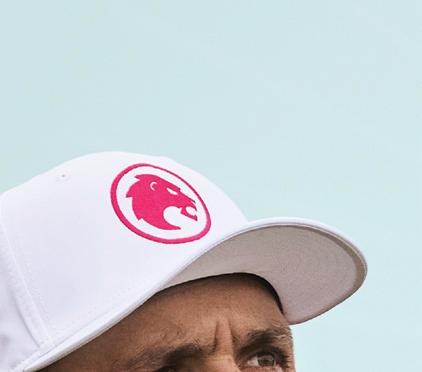

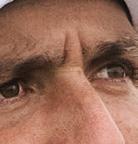









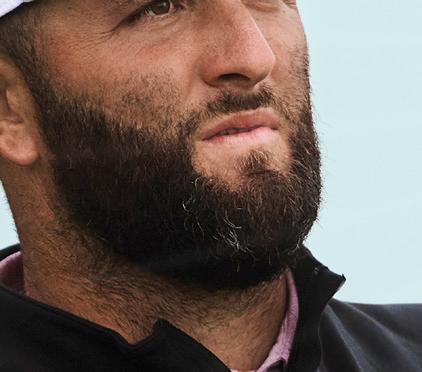


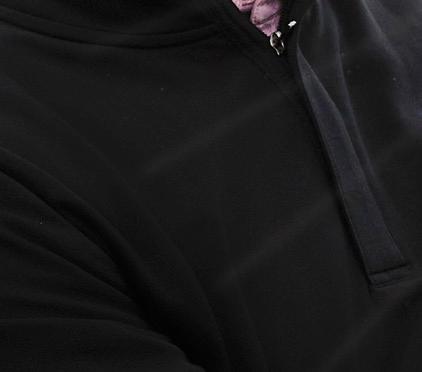












































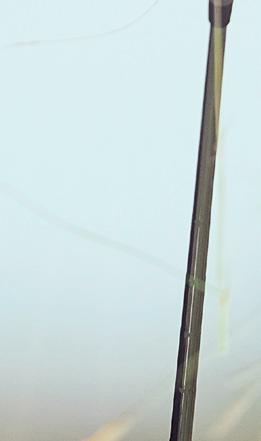




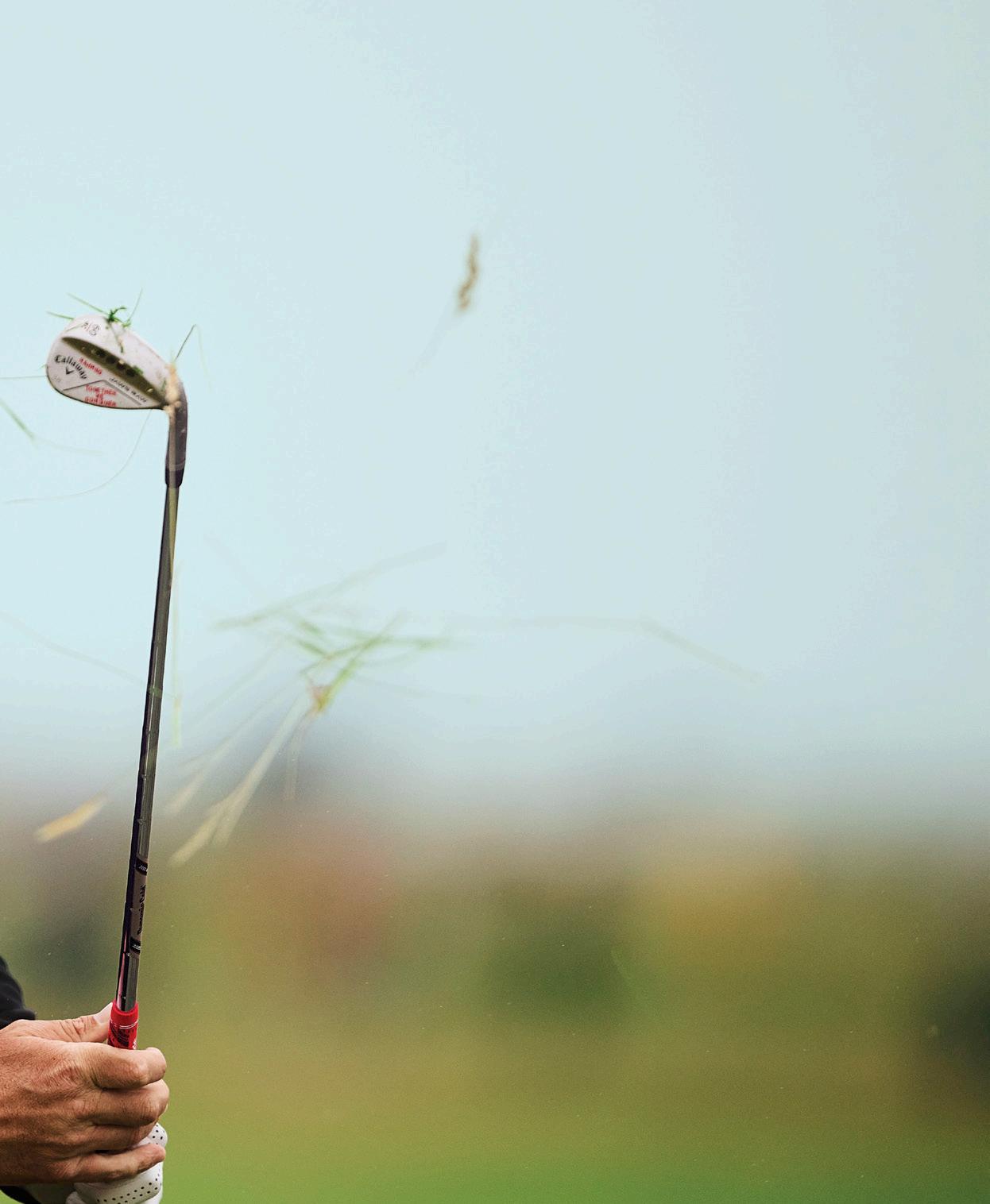








































WILL MONEY RUIN THE CHASE FOR GREATNESS?


































BY JAIME DIAZ

When Jon Rahm signed with LIV Golf for an estimated half a billion dollars last December, he made the smart play.
Rahm became the second highest-paid athlete in the world (behind soccer’s Cristiano Ronaldo) with enough money to take care of future generations of his growing family. It also appeared as if he would soon regain the opportunity he had sacrificed by defecting to LIV—regularly competing against the best fields in golf.
Rahm’s soulful drive to be the best is what had made the 29-year-old Spaniard a commanding and compelling figure. However, smart alone can be soulless, which is why the move rang off key. Rahm had built his reputation on the historical continuum provided by the PGA Tour, to which he had emphatically declared fealty. He had rhetorically asked, “Would our lifestyle change if we got $400 million?” and immediately answered, “No.” When he reversed field with his announcement— while wearing a LIV leather jacket—it caused a whiplash from which the golf world still reels.
By putting money ahead of what had always felt like an uncompromising pursuit of greatness, Rahm, at a decisive moment for the professional game, had done what the modern giants—Palmer, Nicklaus, Woods—had declined to do. The thought occurred to many that Rahm represented a rapidly encroaching era of selfishness and a turning point away from the examples of great players of the past.
That image, with all the contradictions and consequences of his decision, weighed on Rahm, who lost his unshakable veneer when he began playing in LIV events early this year. It was a change reminiscent of Phil Mickelson’s awkwardly diminished persona when he first appeared in public after shaking up the world with his own stunning—and personally devastating—defection to LIV.
Right away, Rahm made comments that seemed
nostalgic for the PGA Tour. In March he lamented that his automatic PGA Tour suspension for joining LIV would not allow him to defend three tournaments that he had won during his domination of the PGA Tour in early 2023—the Sentry at Kapalua, the American Express at PGA West and the Genesis at Riviera.
“Not being there was difficult,” he conceded sadly before recovering with the rote. “It’s a decision I made, and I’m comfortable with it.” But it was not comfortable enough to keep from longingly adding, “but I hope I can come back.”
In an interview with the BBC in April, Rahm unbiddenly lobbied his new LIV bosses to change the league’s format of 54 holes to 72 holes. “The closer we can get LIV to do some of these things, the better,” Rahm said.
Most of Rahm’s 2024 golf lacked fire. Against LIV fields with a lack of depth, he played indifferently, notching two third-place finishes but staying winless in his first 10 events. He was worse in the majors, finishing T-45 at the Masters, missing the cut at the PGA Championship and withdrawing from the U.S. Open with a foot injury. Something was clearly off.
“He’s not on the cutting edge the way he was,” said commentator and former European Ryder Cup captain Paul McGinley on the eve of the Open Championship at Troon. “His performances in majors are showing that. I don’t think he’s in a happy place; he doesn’t look content on the golf course.”
one veteran tour insider i spoke with is certain that Rahm is experiencing deep regret. “I am 100 percent positive that if Jon could give the money back to the Saudis and come back to the tour, he couldn’t write the check fast enough,” he says. “Now there are only four times a year when he’s playing that anybody is remotely interested. He thought his stature in the game was secure no matter where he was playing, and it was a bad miscalculation.”
Indeed, Rahm was set up for greatness on the PGA Tour, having hit the time-honoured markers of a superstar in the making. He had fame, the respect of his peers, the admiration of the golf world and more than $70 million in career earnings from the PGA Tour and DP World Tour. At 28, he had won the 2023 Masters and the 2021 U.S. Open and had 11 PGA Tour wins to go with eight on the DP World Tour. He had been World No. 1 for 52 weeks. His big game and superb touch were accompanied by a love for competition fueled in part by appreciation for golf history and where he could fit into it.
Rahm said his perspective on entreaties from LIV changed after June 6, 2023, when the PGA Tour signaled it would be willing to work with PIF on a “framework agreement.” “That opened the

door for me to do the same thing,” he told the BBC in April. Once he reconsidered the realities, historical greatness took a backseat to “a duty to set my family up as best as possible,” Rahm said, and “I’m getting paid more to play the same sport and have more time. I don’t know about most people, but that sounds great to me.”
Once he left, Rahm came to see his move as a step toward unification. “I could be the start of a tipping point,” he said. Such comments were not popular with his former colleagues at the PGA Tour. According to the anonymous “Undercover Pro” interviewed by Golf Digest senior writer Joel Beall, many PGA Tour players were upset with Rahm because they believe his defection, coming when PIF and the PGA Tour had agreed to cease recruiting during negotiations, widened the schism and prolonged the path to a solution. The players had been unified in staying put on the PGA Tour while a deal was being worked out, and Rahm had hurt that cause.
When Rahm said at his press conference at the PGA Championship in May that he still sees him-
KING REIGNS
Arnold Palmer won seven majors from 1958 through 1964.
self as a PGA Tour member despite his suspension for going to LIV, and that he would play in PGA Tour events if allowed, it drew a strong onair reaction from former player and Golf Channel commentator Arron Oberholser, who said, “I wanted to wring his neck through the television screen . . . and every player in that locker room, if they watched that, should be incensed.”
Whether they are, Rahm’s actions, more than any earlier LIV signing (including those of major-championship winners Mickelson, Bryson DeChambeau, Dustin Johnson, Brooks Koepka, Cameron Smith and Patrick Reed) brought further clarity to some hard truths.
The idea that the best PGA Tour players can be counted on to put the existential health of the tour above their new potential fortunes is over, as is the surety that an elite player in his prime will put a single-minded pursuit of greatness ahead of the new money.
Why does that matter? Because the most interesting parts of golf history are written through the stories of its best players. When they are at

their best, the game is at its best. The striving for glory and greatness is the best producer of epic golf. Bobby Jones’ Grand Slam, Byron Nelson’s 11 victories in a row, Ben Hogan’s six majorchampionship triumphs after a near-fatal car accident, Arnold Palmer’s charismatic years of dominance and Jack Nicklaus’ unprecedented two decades at the top have all been repositories and beacons of what golf greatness entails. With the “irrational” financial offers that have destabilised professional golf, LIV has lessened the long-presumed importance of week-to-week tournament play, and drained the sport of some of the passion and intensity that is essential to this otherwise slow-moving game.
LIV has discovered this. Despite its novel peripheral efforts for attention, the casualness in LIV’s presentation fails to project energy and remains antithetical to serious competition. To a lesser degree, the now defunct, lucrative and no-cut WGC events on the PGA Tour also suffered from low intensity and were often dismissed as “cash grabs.”
Comedian Jerry Seinfeld could have been cautioning pro golf when he recently wondered, on the “Blocks Podcast” in May, “What the hell happened that money became everything. In the 1970s, it was, ‘How cool is your job? How cool is
what you’re doing? If your job’s cooler than mine, you beat me.’ ... If your work is unfulfilling, the money will be, too.”
Nobody could accuse Gary Player of being unfulfilled in his work. The nine-time major winner, whose autobiography is titled, To Be the Best, always acted like he had the coolest job in the world. At 88 he remains driven, still shooting even par rounds from the middle tees, still seeking challenge.
“You can’t make money your objective and be a superstar, which to me is someone who wins six majors or more, though I wonder who is going to get there anymore,” Player says. “You must want something deeper. I made myself love adversity because you can’t escape it. I was that crazy to be a champion, but that sort of attitude is much harder to sustain now because the game is wrapped around money like never before.”
Nick Faldo, who made Player’s exclusive designation with his six majors, says money can be an indirect motivator when it’s needed, an impediment when it no longer is.
THE MAVERICK Bryson DeChambeau has rebutted the idea that a soft schedule sates a hunger to be great.
“When I was in my early prime playing against guys like Seve and Greg, I knew I had to win to change my lifestyle—get a good car, fly first class, a house near Wentworth,” Faldo says. “I just tried very hard to win, knowing the money would come with that effort, but it’s harder to be great if you don’t need to win, and as much as I played to test myself against the best, that became a challenge for me as I got older. These young guys now are suddenly getting enormous major sport money and have everything they want; I don’t think they will push themselves as hard as we did.”
Even Jack Nicklaus, who sustained greatness longer than anyone in history and who enjoys his role as a sounding board for many of today’s young stars, confesses some concern that the new money could have a dulling effect on competition. “I would think that it’s only human nature that it would affect motivation and performance. It’s what I worry about on the tour.”
Other factors may also be softening the competitive edge. The new emphasis on improving mental health among elite athletes has touched golf, especially with the suicide death of Grayson Murray in May. The PGA Tour has acknowledged that it is providing counseling to address new stressors like the social-media news cycle, and Dr. Michael Lardon is advocating for a mental-health trailer along the model of the tour’s successful fitness trailer that started in 1985.
Rory McIlroy emphasised enjoyment when he returned to the game at the Scottish Open a month after his painful loss at the U.S. Open at Pinehurst, speaking of a revitalising sojourn he spent in New York City as part of a new approach. “I need to take a step back and appreciate what I’ve done in my career and in my life and enjoy my suc-
cess,” he said. “I don’t really enjoy my success, and I haven’t, I would say, for the last five years. I’m committed to having more fun going forward.”
Asked about some differences among today’s young players compared to previous generations, sports psychologist Gio Valiante cited a 1983 quote from the maniacally driven Hogan, who grew up poor and at age 9 witnessed his father’s suicide. “I feel sorry for rich kids now, I really do,” Hogan said, “because they’re never going to have the opportunity I had. Because I knew tough things. I had a tough day all of my life, and I can handle tough things. They can’t.” Says Valiante: “I suspect a far greater majority of today’s players come from more nurturing backgrounds, which tends to breed less obsession with greatness. The problem with being well adjusted and still trying to be great is that at some point, the question occurs, ‘What the hell am I doing this for?’ If the answer isn’t clear, that journey will end.”
PGA Tour observers have also noticed an increased degree of conviviality among players, whether because they are more conscious of the shared stresses of competitive tour life or simply because they are more comfortable. “Everyone is friendly now,” says a veteran caddie. “Probably much better and healthier for your life but for greatness in sport? Tiger used to be aloof. It wasn’t personal disdain, but he wanted to prove he was superior and almost took offense at the possibility
THE SURETY THAT AN ELITE PGA TOUR PLAYER IN HIS PRIME WILL PUT THE SINGLE-MINDED PURSUIT OF GREATNESS AHEAD OF NEW MONEY IS OVER.
someone thought they could beat him. It was part of his edge”
Perhaps Tiger set the standard of greatness so high that it has drained the belief that it can be approached, let alone equaled. Only the iconoclastic Koepka, with five majors, is open about his belief. As he said in 2021, “In my mind, I’m going to catch him on majors.”
Ben Hogan won six of his nine majors after a near-fatal car crash.
Deane Beman, the commissioner of the PGA Tour from 1974 to 1994, remains a visionary at age 86. Ironically, the man who in 1980 developed the Senior Tour in part to lengthen the moneymaking years of his members believes careers on the PGA Tour will be getting shorter and not just because of more money.
Beman lays out this sequence of reasons: Players are getting better younger. The latest example is Nick Dunlap, 20, who became the first player in history to win on the PGA Tour as an amateur and

WITH THE ‘IRRATIONAL’ FINANCIAL OFFERS THAT HAVE DESTABILISED PRO GOLF, LIV HAS DRAINED THE SPORT OF SOME OF ITS PASSION AND INTENSITY.
professional in the same year. Part of this precociousness comes from the less complicated power game that more forgiving equipment and faster swing speeds facilitate. Because the natural dissipation of youthful speed will become a greater competitive disadvantage, players will age out sooner. The shorter careers will result in fewer players compiling historically great numbers.
“It will be more difficult to become a superstar,” Beman says. “There will be fewer players considered in that category, they won’t win as much as their predecessors, and they won’t be around as long—more good golf but less greatness.”
Of course, a few rare players will have the talent and internal wiring to separate them from the pack, no matter how much the world changes. Currently owning the stage is the alliterative duo of Scheffler and Schauffele, currently in a race to be chosen PGA Tour Player of the Year..
Scottie Scheffler seems to have the inner fire and confidence to become great.
Both are intelligent, gracious, low key and conspicuously non-materialistic. Both possess a blazing inner fire and confidence for golf. Scheffler, who recently passed Faldo for fifth place in career weeks at World No. 1, in the past two years has compiled ball-striking statistics exceeding even the best of Woods. At 28, he has won two of the past three Masters but seems equally well suited to capturing the other three majors with a temperamental putter seemingly his only hurdle. In 2021 he tried to explain to Golf Digest Senior Writer Matthew Rudy, his face no doubt fixed with the cheerful smile that undermines his case even as his achievements support it, that he has got a little something extra going on. “It doesn’t matter where I’m playing, I’m just an amped-up person. I can play this game.”
As for Schauffele, his two major victories this year on the back of several high finishes in past majors have given the 30-year-old and his wellrounded game the consensus inside track to complete the career Grand Slam ahead of the players who have each held three legs for several years— Spieth, McIlroy and Mickelson.
Chris Como, who has taken over the coaching reigns from Schauffele’s father, Stefan, says Xander is immersed in expanding a journey dedicated to finding out how good he can get. “He knows he has this aptitude for golf,” says Como, “and it’s become his fulfillment and his art, and it’s beautiful.”
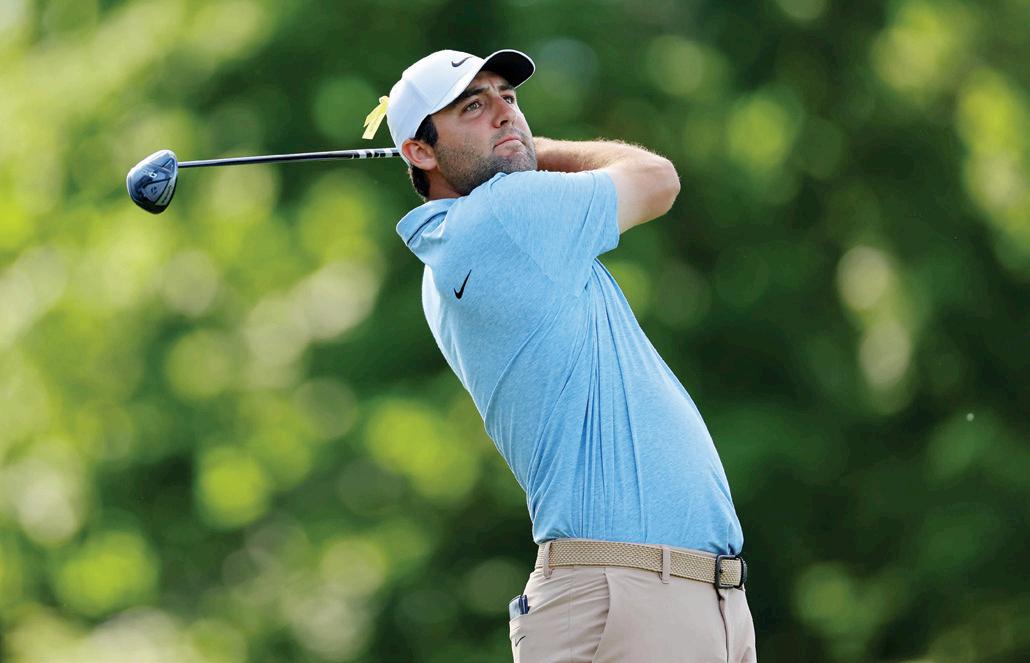

Another duo, quite different, is Koepka and DeChambeau. Although most of the top players who have gone to LIV have seen their performances in majors decline, Koepka and DeChambeau, each with a win and a runner-up in major championships since going to LIV, have provided loud rebuttals to the narrative that a soft schedule and easy money sates the hunger to be great.
Koepka went to LIV because of the uncertain status of a knee injury that threatened to end his career. The knee improved, but just as he did on the regular events on the PGA Tour, Koepka doesn’t seem particularly motivated by regular LIV events, although he has won four of them in three years. Regardless of what league he plays for, Koepka, 34, cares about majors, believing he has the game and the mentality to prevail when conditions are toughest. However, this year, his best finish in a major was T-26 at both the PGA Championship and the U.S. Open, lending grist to the argument that LIV Golf’s environment is not ideal preparation.
DeChambeau, 30, would beg to differ. A maverick by nature, the shorter LIV schedule lets him indulge his obsession with total autonomy, leaving plenty of time for hitting the practice range for monster sessions or developing a successful YouTube channel that is focused equally on golf instruction and presenting a more likable version of himself. DeChambeau said that the team
aspect of LIV has been good for him in contrast to the loner he was on the PGA Tour. To go with his U.S. Open win at Pinehurst, DeChambeau was T-6 at the Masters and second at the PGA Championship before missing the cut at Troon, after which he vowed to bring more shot variety, a departure from the way he likes to play, to the next Open. In his own way, alternating between seeking attention and disappearing with his launch monitor, DeChambeau pursues greatness.
Where does Rahm fit in? The second half of the year got better when he tied for seventh at the Open. His last-round 68 started with three birdies that put him within range of the leaders, but he flattened out to play even par the rest of the way.
One week later he got his first LIV victory in England, his tearful reaction no doubt a release after months of stress as a lightning rod. He came to the Paris Olympics eager to win gold for Spain, but also determined to show, on the big stage, that he was a still a force whose fire had not been doused.
And he was well on his way to doing so. Tied for the lead with Schauffele entering the final round, Rahm turned in four under 31 and then birdied the 10th hole take a four-stroke lead. But Rahm played the last eight holes five over par, not only losing the gold medal to the PGA Tour-tempered Scheffler, who made up 10 strokes on Rahm on the final nine, but failing to medal at all.
Jack Nicklaus won 18 professional majors from 1962 to 1986.
It can be debated whether his inability to close should be attributed to decline in mental toughness or if he took on too heavy a psychic load. But there was no doubt that the ordeal left Rahm crushed. “I don’t remember the last time I played a tournament and felt this,” he said. “I think by losing today, I’m getting a much deeper appreciation of what this tournament means to me than if I had won a medal, right? I’m getting a taste of how much it really mattered. . .I’m assuming there’s gonna be motivation for the future. But right now, it’s more painful than anything else.”
Rahm’s passion and pain was a reminder of the soulful player the PGA Tour has lost. Because even more than proving that playing for LIV has not diminished his fire, Rahm wanted that gold medal for the glory and greatness he’s always sought. As it stands, in 2025, he’ll have five more opportunities to resume that chase—the four majors and the Ryder Cup. But only five.
It’s possible that Rahm will be spending several prime years as a member of LIV, a dreaded “what if” in his career retrospective. If so, he can recalibrate and win tournaments unlikely to be significant on his record, wait for the majors to make history, and, as he did in signing with LIV, make family his top priority. His wife Kelley is due to give birth to their third child later this year.
This is pro golf’s lucrative limbo, a balance of competition and contentment, more smart plays to be made but not as much greatness.
PASSPORT IN POCKET, BAGS ARE PACKED, CLUBS AT THE READY!
BY HARRY GRIMSHAW





SET YOUR GOLFING RADAR TO SOUTHERN SPAIN. Andalucía to be precise. A destination that plays second home to world-class footballers and Hollywood celebrities, so you know it’s going to be good!
This year-round sunshine and golfing hotspot has over 120 worldclass golf courses and is already Europe’s leading golf destination. But maybe you didn’t know, that you can easily fly direct from Bahrain, Kuwait, Qatar, Saudi Arabia and the UAE straight to Malaga International Airport.
Running alongside the crystal-clear waters of the Mediterranean coast with it’s idyllic beaches and beautiful landscapes, Andalucía is peppered with world-class golf courses
designed by both legends of the game and the world’s most sought after designers. Meaning, you can pretty much throw a dart at a map and take your pick at a five star course here. Beginners, amateurs and professionals can enjoy these courses. With eight provinces to choose from, the Costa del Sol is home to more than half of Andalucía’s golf courses, Cadiz is famous for its perfect greens and white sandy beaches, the Costa Tropical lets you combine beach, golf and snow, the Almeria region holds ten courses including two Arizona desert-styles and in the province of historical Huelva not only does it have the Doñana National Park but it greets you with 11 golf courses. Throughout an entire year, Andalucía’s golf courses hold

▶
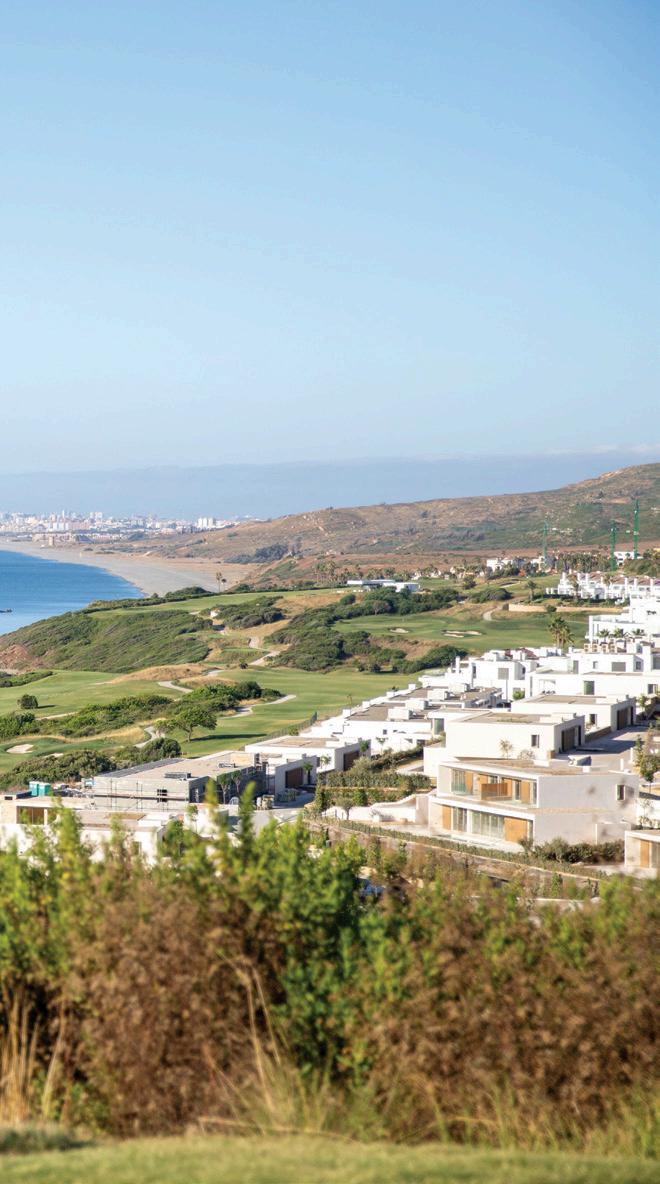
important tournaments in both the amateur and the professional game. Andalucía has hosted several tournaments on the DP World Tour, Ladies European Tour, Challenge Tour, Legends Tour and most recently the LIV Golf League. Who can forget the 1997 Ryder Cup at Real Club Valderrama and 2023 Solheim Cup at Finca Cortesin! It’s a golfing mecca built with the purpose of bringing together the best golfers in the world so that fans may enjoy the great beauty of this sport in the unmatched scenery of Andalucía. But the best thing is, you can choose to play any of them that you want! Carry on reading, for more on our whistle stop trip to your next golfing getaway!


My stay for the four day trip was the stylish Hotel Encinar de Sotogrande. Set just five minutes drive from the beach, in the exclusive Sotogrande region, this hotel mixes contemporary design with traditional Andalucian décor.
It’s modern & elegant style also features an outdoor swimming pool with a sun terrace and snack bar. From the restaurant you can enjoy views of the surrounding Sotogrande countryside and golf courses.
But the best part about it was the proximity to the encompassing golf courses. Nine of the first class courses in Sotogrande are no more than a 12 minute drive from the hotel! Ideal!
Carved into the hillside with stunning views in every direction, the La Reserva Club’s 18 hole championship course was designed in 2003 by American architect and course designer Cabell B. Robinson.
At full stretch it’s a course that comes with length, but with it’s wide sweeping fairways, large greens with gentle but challenging undulations and tricky water features, it is a must-play for any golfer visiting the region.
Having only opened just over two decades ago, La Reserva comes with professional pedigree. The DP World Tour (then European Tour) returned to Sotogrande in 2014 for a brand new professional tournament co-sanctioned with the Challenge Tour, the NH Collection. While in May 2019 the club also staged the inaugural La Reserva de Sotogrande Invitational (hosted by Annika Sorenstam), which resulted in Céline Herbin claiming her second Ladies European Tour (LET) title.
More recently, in 2021, La Reserva hosted the second of four events of the Aramco Team Series on the LET – the first team event of it’s kind on a professional golf tour – with three professionals teaming up with an amateur, delivering a fitting chapter in Sotogrande’s proud golfing legacy.


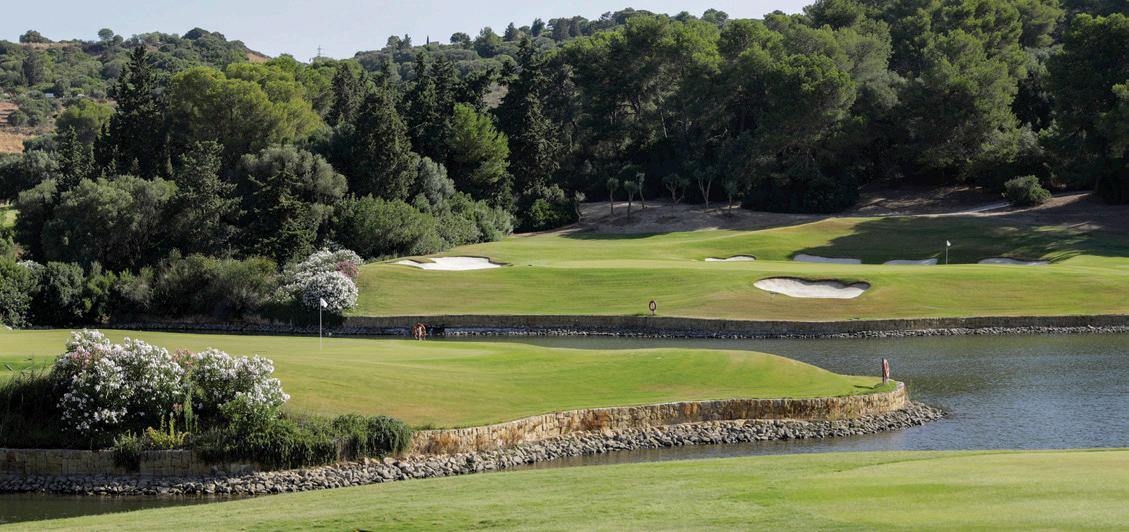

Castillo de Castellar, Castellar de la Frontera
If you do manage to find time for a brief escape away from the golf courses, and fancy heading into a real authentic rural part of Andalucia, I couldn’t recommend this next stop enough.
Located just a 20-minute drive from the Sotogrande region, at the heart of the Campo de Gibraltar is Castellar Castle. Which translates as the “Old Village’. This declared Monument of Historical and Artistic Importance in 1963, is situated on top of a hill surrounded by the glimmering Guadarranque reservoir.
This fortress is now home to a number of different projects, including a tourist complex of country cottages for rent and even a boutique hotel.
The ideal spot for a golfing breakaway, to put you in contact with nature.
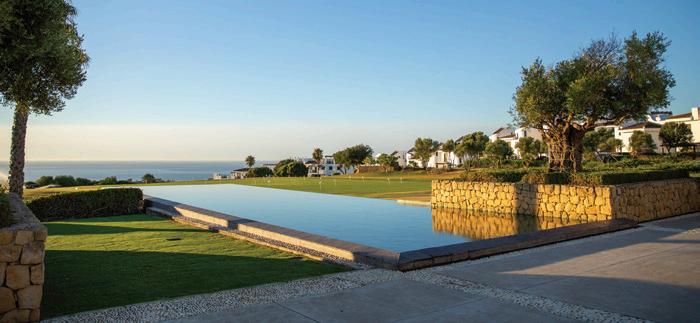
La Hacienda Golf offers an unparalleled golfing experience. With two newly renovated championship 18-hole golf courses on offer, La Hacienda’s “Links” course features a unique links course redesigned by famed American designer Kurtis Bowman. While the “Heathland”, crafted by former Ryder Cup player Dave Thomas, greats you with more of a traditional layout with wide fairways and outstanding views of the sea, Gibralter and Africa!
Formerly known as Alcaidesa Golf, the European Tour Destination is part of a multi-million-Euro investment project with La Hacienda Links Golf Resort set to open the Fairmont La Hacienda hotel in the coming months. With 311 units of accommodation and a wide range of amenities, including five restaurants and bars, swimming pools, spa and fitness centre it’s a place you need to make sure you visit in the Costa del Sol!


Bar de Tapas Don Benito, San Roque
The food in Spain is unlike anything you would have tried before. And what better way to escape the hustle and bustle down on the coast, but to head inland a couple of miles to tickle your taste buds at some traditional Spanish cuisine.
You’ll be able to test your taste buds off the beaten track with these little portions, that pack a punch of flavours.
How about some oxtail croquettes, fried calamari or even some marinated tuna to get you started?
Beware though! The menus are usually only in Spanish, so get that google translate at the ready! That’s how real and authentic this place is, which makes it great!

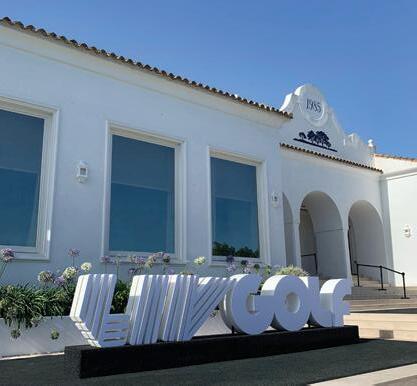








As previously mentioned, the Andalucian region has played host to numerous professional golf tournaments over the past three decades. The week I attended was timed perfectly with LIV Golf Andalucia at Real Club Valderrama, the tours second time at the historical 1997 Ryder Cup venue.
With Spanish fans out in full force, they of course were following the one man who already had 15 top 10’s and three titles to his name around Valderrama. Sergio García came from seven strokes back in the final round, to win his first LIV Golf Individual trophy on the second sudden-death playoff hole against Crushers GC’s Anirban Lahiri.
Also in dramatic fashion, García’s Fireballs GC teammates, Abraham Ancer and David Puig beat the Crushers duo of Bryson DeChambeau and Paul Casey in the team aggregate-score playoff, to capture the team trophy at Real Club Valderrama.



The brand new SO/ Sotogrande has it all, for the perfect yearround getaway. One of the many reasons to check it out is the prime location. Framed between the Mediterranean Sea and the Atlantic Ocean, SO/ Sotogrande is only 20 minutes away from Gibraltar Airport and just over an hour from Malaga’s International Airport.
Who would not want to escape to the province of Cadiz?
SO/ Sotogrande Spa & Golf Resort has 152 rooms and 36 suites - all of them with a private garden or stunning terrace. The facilities include three outdoor swimming pools, beautiful private gardens, a Kid’s Club, and a Spa & Fitness centre overlooking the sea.
The culinary offerings at SO/ Sotogrande is composed of not only four restaurants and bars to savour traditional Andalucían recipes, but also more than 40 handcrafted signature cocktails!



CULINARY OPTIONS:
• Cortijo Santa Maria 1962
• IXO Tapas & Bar • Society Club House • Rocio Garden
• Marxa Chiringuito



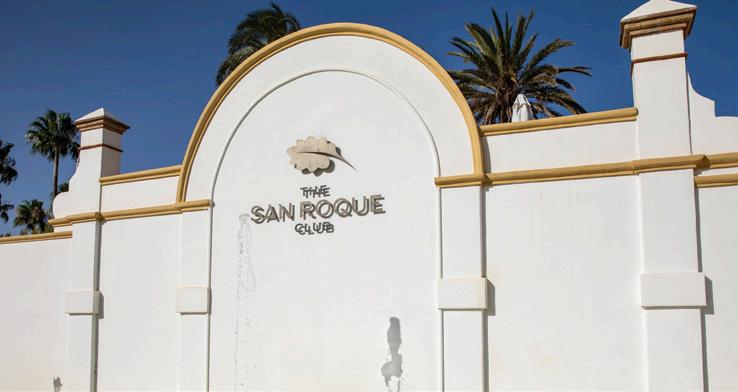
The San Roque Club is situated with a backdrop of 340 acres of lush Andalucian hills and historic cork oak woods. With the clubhouse as the centrepiece being the Domecq family mansion, it overlookins numerous holes. The club first opened its doors in 1991 and rapidly became the golf resort of choice in the Sotogrande region.
The Old Course at San Roque has a number of elevation changes, especially on the front nine, as you find yourself having to work your way through the forests of cork oak trees. While the back nine may seem slightly less undulating, it still leaves you with deep ravines and plenty of water hazards to keep you busy!
Designed by Dave Thomas and Tony Jacklin, the Old Course, along with Real Club Valderrama and Real Club de Sotogrande actually became known as the golden triangle of golf back in the 1990’s.
So much so, that during the 1997 Ryder Cup which was being held at neighbouring Valderrama, San Roque hosted both the European and American teams and their families. Still to this day, the plaques with the players names remain on the door to the suites they occupied.
Since then, this par 72 layout held its first professional event in 1993 with the DP World Tour’s qualifying school up until 2007. While not forgetting in 2005, when it hosted the Spanish Open which was eventually won by Sweden’s Peter Hanson.
However, it is the present and looking into the future of the club that is the most exciting. With a multi-million euro renovation of all the club facilities now completed, The San Roque Club once again can be considered one of the best golf courses in the whole of Europe.




















































































































How does the incidence of golf feats compare across various levels of the game and pro sports? We asked Golf Digest Professional Advisor Lou Riccio, Ph.D., to dig into the data. These 15 findings should sharpen your perspective
A 15-HANDICAPPER MAKING A THREE-FOOT PUTT (68% of the time) is like Rickie Fowler hitting a drive in the fairway (66%), which is about the same probability as Miami Dolphins wide receiver Tyreek Hill scoring a touchdown in a regular season game (61%).

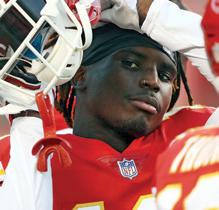




A golfer who shoots 85 taking less than 34 putts in a round (48%) is like Justin Rose taking less than 29 putts in a round (51%) and Wimbledon champ Carlos Alcaraz winning the next tennis major (50%).






45% 45%








A PAR (45%) is like Rory McIlroy hitting a drive longer than 320 yards (47%), which is like Tampa Bay Lightning goaltender Andrei Vasilevskiy giving up one or two goals in a game (49%).
An 80s-shooter making a par (45%) is like Justin Thomas making an eight-foot putt (43%) and tennis sensation Coco Gauff making it to at least the semi-finals of a Grand Slam (40%).

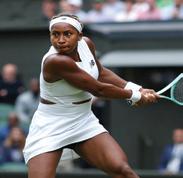
24% 20%

A golfer who shoots in the low 90s making a par on the next hole (24%) is like Xander Schau ele making birdie or better on the next hole (25%) and Houston Astros pitcher Justin Verlander striking out two batters in an inning (25%).






an inning (25%).





A 5-handicapper scoring back-toback pars (20%) is like Ludvig Åberg going for a par-5 green and making birdie or better twice in a row (23%), which is about the same as Golden State Warriors guard Stephen Curry making two threepointers in a row (18%).



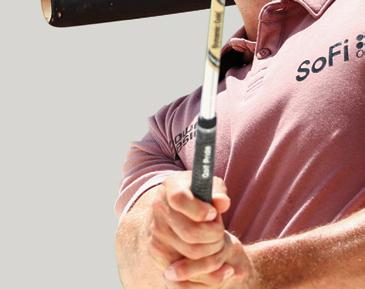



A 15-handicap hitting a green in regulation (11%) is like Wyndham Clark getting up and down from a greenside bunker 5 times in a row (12%), which is about the same as New York Yankees outfielder Aaron Judge hitting a home run in consecutive games (7%).
9%



An 80-shooter making three consecutive pars (9%) is like Scottie Scheffler making two birdies in a row (9%), which is like PBA bowler Jason Belmonte rolling four strikes in a row (12%)



rolling four strikes in a row (12%)

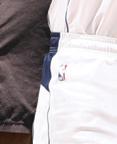
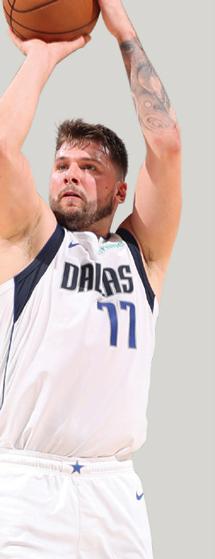



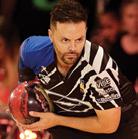
7%
A golfer who averages 85 shooting under 80 (7%) is like Sahith Theegala making a 30-foot putt (7%), which is like Dallas Mavericks guard Luka Dončić scoring 45 or more points in a game. (8%).



A 100-shooter making a par (7%) is like Shane Lowry hitting 11 fairways in a row (8%), which is about the same as Baltimore Ravens placekicker Justin Tucker making seven 50-yard-plus field goals in a row (7%).
7% 5% .3%
A 12-handicapper making a birdie (6%) is like Collin Morikawa scoring back-to-back birdies on consecutive par 4s (4%), which is about the same as Indiana Fever guard Caitlin Clark making her next three 3-pointers (5%).


















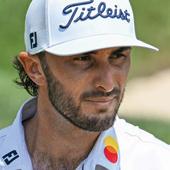
4%
A 10-handicapper making three pars in a row (4%) is like Min Woo Lee making four sand saves in a row (6%) and Inter Miami’s Lionel Messi scoring a hat trick—three goals in one game (5%).

A golfer who shoots in the mid-80s making two birdies in a row (0.3%) is like Max Homa making five birdies in a row (0.4%) and Los Angeles Angels outfielder Mike Trout hitting three home runs in a game (0.1%). .05%

AN 18-HANDICAPPER MAKING TWO BIRDIES IN A ROW (0.05%) is like Jordan Spieth making a holein-one (0.04%), which is about the same as stock-car racer NASCAR races in a row (0.09%).

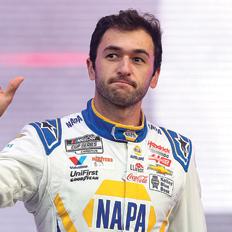


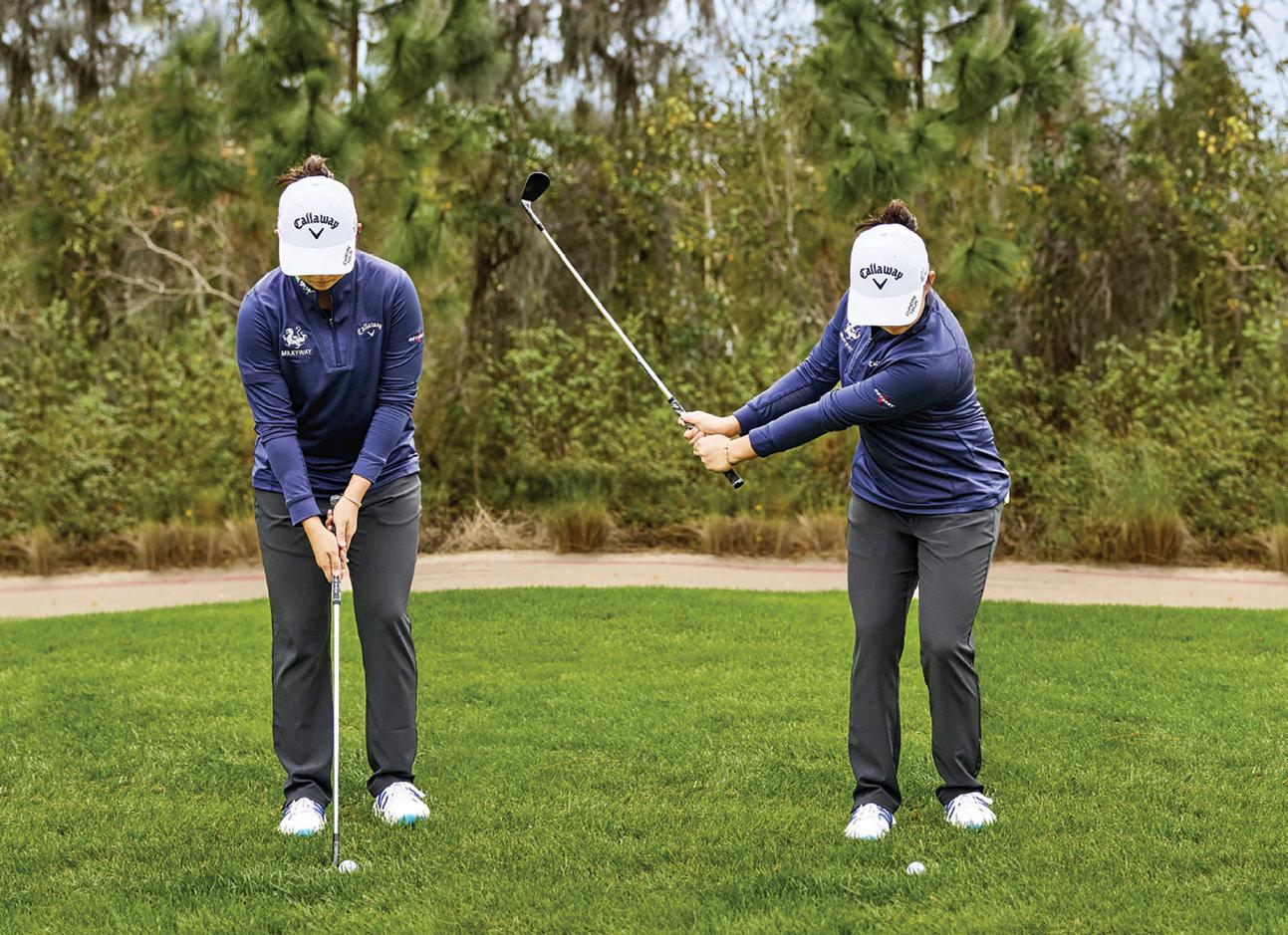
IIf you aren’t yet familiar with the golf skills of rising LPGA Tour star Ruoning Yin, an introduction is in order. “Ronni,” as she’s called, went from missing the cut in more than half the events she played in her first LPGA Tour season in 2022 to winning a major (KPMG Women’s PGA Championship) and rising to No. 1 in the Rolex World Golf Ranking in 2023. She also won the DIO Implant LA Open and had eight other top-10 finishes last year. That’s a pretty big upward move in a short amount of time—and somewhat historic. Yin, 21, is only the second Chinese golfer to reach No. 1 in the Rolex ranking, joining Shanshan Feng.
One of the reasons she improved so quickly is that she learned how to routinely recover from bad shots. Yin, who ranked second on the LPGA Tour in strokes gained/scrambling last season, got up and down two out of every three times she missed the green in regulation. What’s her secret?
She’ll share some technique tips in a moment. First, Yin says, you might want to think about your mind-set. A big part
of improving comes from knowing you’re going to miss the green—a lot. You have to be prepared to save par from a lessthan-ideal lie. You need a smart plan to get the ball close to the hole and the familiarity and confidence to pull it off.
“Having a good short game is about consistently hitting the ball with the center of the clubface,” she says. “But I see amateurs trying to hit really technical shots around the greens, even though they don’t have enough time to practice and develop the feel and skill necessary to hit those shots. Instead, go with the simplest shot for the situation.” An example: putting instead of chipping from just off the green in the fringe or fairway.
With input from her coach, Gareth Raflewski, here are Yin’s thoughts on getting out of a couple of the most common, yet tricky, jams all golfers face from just off the green. —KEELY LEVINS


Ronni says: If you’re in the rough and there’s something between you and the green that you have to carry, resist the urge to try a flop shot. It’s too tough to consistently execute. Instead, follow what I’m doing in these photos (above). Grab your most lofted wedge, set up with the clubface and your stance a bit open, and set more of your weight on your front foot. This adjustment in weight will help steepen your angle of attack, which in turn helps you strike the ball with less interference from the grass. That’s key if you don’t want to leave these shots short. Don’t worry about the steeper angle lowering your ball flight. Opening the face slightly at ad-
dress counters that. You’ll still have enough loft to fly the ball over whatever is between you and the green. When you swing, keep pressure on that front foot. It’s a short shot, so there’s no need for any weight shift; all the power you need will come from rotating your torso toward the target. Also, keep your wrists firm. Hinging and unhinging your wrists will make quality contact much harder to get. Here’s one more thing to remember: When picking your target, know that the ball will come in high and soft. You won’t get a lot of roll, especially on a shot where you’re chipping into an uphill green that is pitched toward you (right).

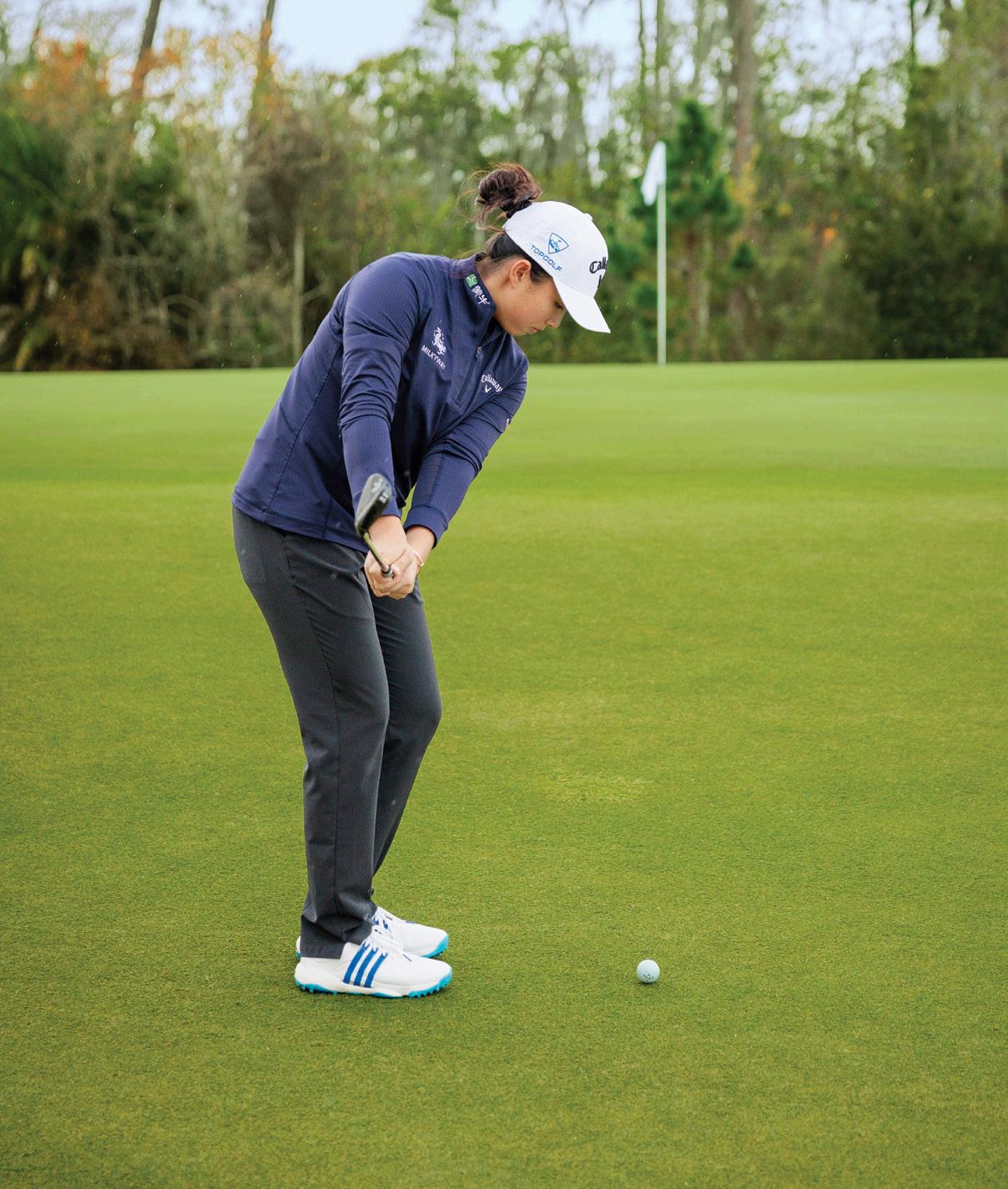

To capitalize on your great recovery shot, be sure to hold your finish when you putt—just like you would for a full swing. It’ll keep the ball on the line you chose.
I also do this drill (right) to build confidence. Try to make a putt from each tee station around the hole. If you can’t make them all consecutively within 20 minutes, tap out. This is about keeping your focus on makable putts. Do that, and you’ll save a lot of pars.
Ronni says: When the ball is sitting below the green, especially when it’s on a tight lie like this (opposite page), it’s common for amateurs to dig their wedge into the turf. The result is a chunk that doesn’t get to the green and, a lot of times, rolls right back to where you’re standing
If this shot is tricky for you, start by making a few adjustments at setup. One of the reasons you might chunk this shot is because you’re leaning the shaft way forward, a prime digging position. Instead, I open the face a bit and then lift the heel end of the clubface off the ground slightly. This sets the shaft more vertical than usual, but more importantly, puts the club in a much better position to slide along the turf instead of digging into it. Just know that you’ll likely strike the ball higher on the face, which means it will launch higher (left). Be sure to factor that into how far you want it to carry before it starts rolling.
Here’s another thought that should keep you from leaving this shot short: As you swing back and through, feel like your arms and torso are moving together. This will make your motion more consistent and controlled. To help you stay connected all the way past impact, think about the grip of your club going toward your left pocket. Also, don’t release your wrists. Any time you do that, you automatically make quality contact much harder to achieve.
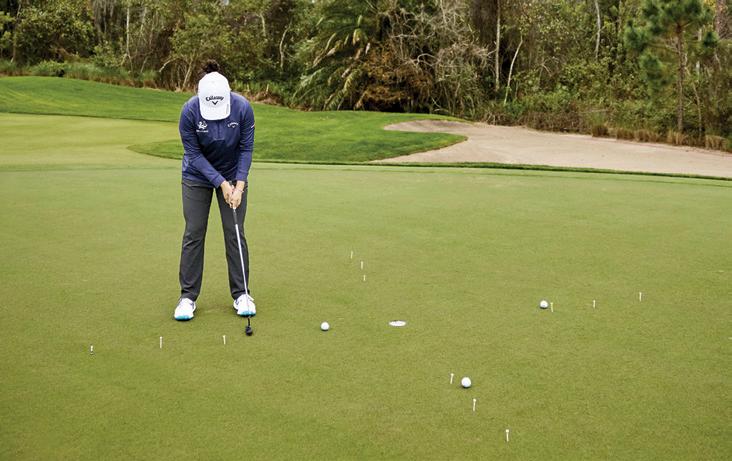
A gallery of a handful of the local winners in the amateur circuit. Spot anyone you know?!




















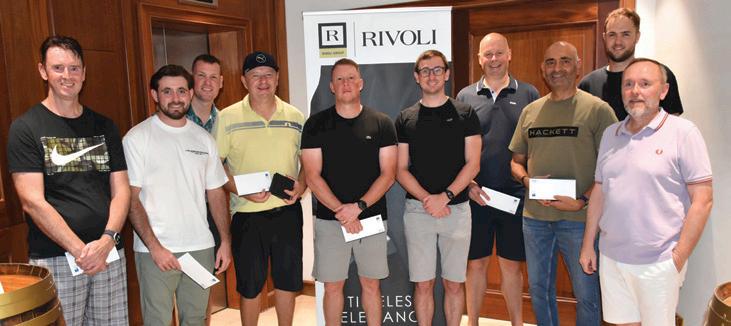






















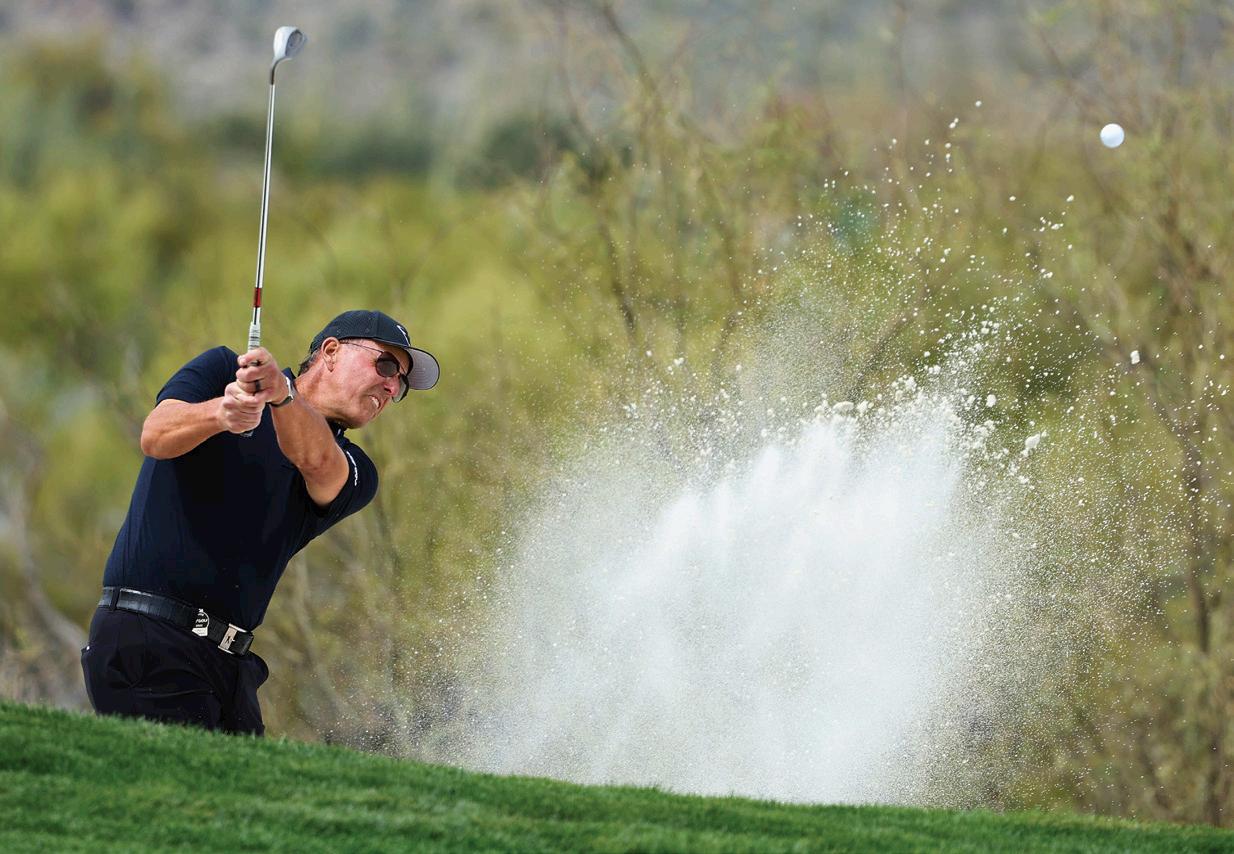
PHIL MICKELSON IS known for his incredible wedge game, and back in 2005, it seemed like he was getting up and down from everywhere. Mickelson tied a career-high with four wins on the PGA Tour that year, including his second major, the PGA Championship at Baltusrol Golf Club.
ker advice, starting with how to set up:
The short-game master’s simple bunker advice from his best year on the PGA Tour
While he is renowned for using his 60-degree wedge to hit flop shots, Mickelson was pretty darn good from the sand, too, ranking 15th on the PGA Tour in bunker saves that season. Golf Digest was lucky enough to spend a lot of time with Mickelson on the lesson tee during his prime, and one such visit netted some great greenside bun-
“I can’t emphasise enough that your weight has to stay forward on bunker shots,” he said. “To get a feel for this, lift your back foot’s heel slightly off the ground as you hit practice shots. With no [way] to shift your weight, you’ll be forced to keep it forward.”
With your weight staying forward, you reduce the risk of skulling it into the lip or hitting too far behind it, he said. Here is the rest of his advice from 2005 on how to play from firm or fluffy bunker lies. —madeline macclurg

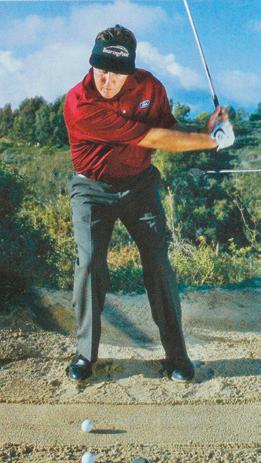
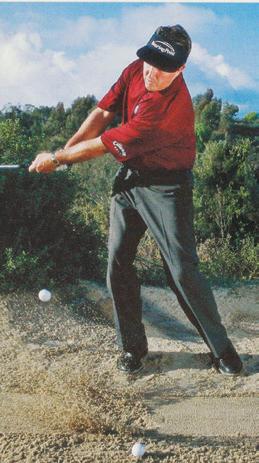
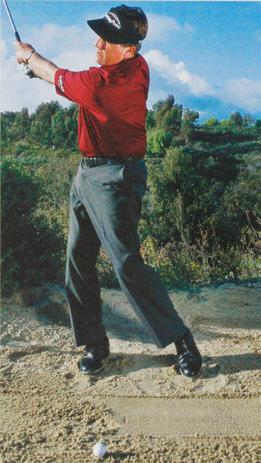
“In packed sand, you don’t want your wedge to hit the ground too early and bounce into the middle of the ball. To prevent that, set your weight forward and tilt your spine toward the target. You’ll automatically hit closer to the ball. You’re playing this shot with an open clubface so you won’t have any trouble getting the ball up. Remember to accelerate through and finish low. Note how my spine angle at impact matches its position at address.”
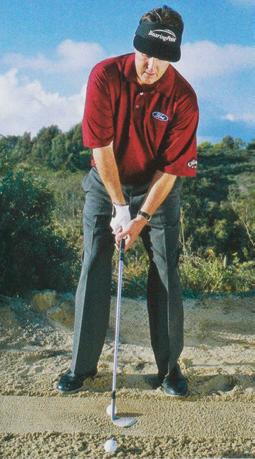

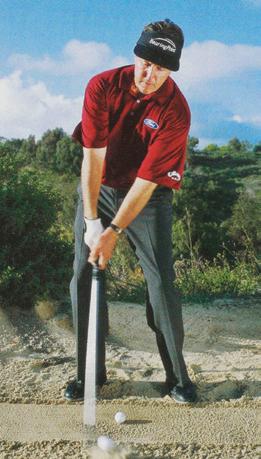

“This shot is the standard explosion you’re used to hitting. Your weight should be spread evenly between your feet with your stance a touch open and your spine tilted slightly away from the target. Notice how I set my head further back here. I’m going to hit two inches behind the ball, directly below my chin. Try to skim the club through the sand, underneath the ball, with plenty of speed. Look how I finish high and my body is more upright.”

Do these three things if you want to drive the ball in play
BY LINN GRANT
As a kid in sWEdEn, I loved hitting driver. My dad, who played professionally on the Swedish Golf and Senior tours, taught me the basic swing fundamentals, and I’d spend hours on the range trying to hit the ball as far as I could.
Learning how to swing the club fast was important to my development as a junior, but as I progressed through the amateur ranks to the Ladies European Tour and then the LPGA Tour, I found myself working less on speed and distance and more on accuracy. The more I played, the more I came to realise that while hitting it far is fun, hitting it straight is how you position yourself to make more birdies and pars and fewer bogeys.
In 2023, my first full season on the LPGA Tour, I ranked second in strokes gained/off the tee. A big reason was my ability to keep the ball in play—I hit nearly three-quarters of my fairways. Too many amateurs focus exclusively on how far they hit it, just as I did when I was a kid. But trust me, if you turn your attention to hitting more fairways and less bombs, your scores will improve much faster.
Here’s how to do that using three fundamentals I concentrate on when I absolutely have to hit the fairway, including how to aim consistently for success. Add these into your game and you, too, will see how much fun golf can be from the centre of the fairway.
—with KEELY LEV i NS
LINN GRANT captured her first LPGA Tour title in 2023 at the Dana Open. The 25-year-old also won three points for the European Solheim Cup team.



I find that focusing on a very small, specific target heightens my awareness of it and increases my chances of hitting the fairway. First, I choose a tiny target in the distance—e.g., a bush or part of a tree—in line with where I want the ball to start. Using my driver shaft, I then trace a line from this spot all the way back to the ball (photo, previous page). This helps me identify an intermediate target a short distance in front of me—such as a leaf or broken tee— which makes it easier to align my clubface and body (photos, above). There’s no clutter. When I look up, I no longer see a fairway, I only see my target.
Whenever my swing gets o , I know to slow down my transition. This helps me get back to the proper sequencing of movement on the downswing, which is critical to making solid contact. My lower body is what initiates the downswing, not the arms and shoulders—which is what happens if I rush things. As my weight transfers forward, my hips rotate through so that my body is already facing the target at impact (photo, right). My shoulders are just now squaring up to the target and have yet to catch my hips. That’s big: The arms follow the body and not vice versa. Key on this transition thought and you’ll not only hit it straighter, you’ll hit it further, too.









Outside of hinging my wrists halfway back, my hands play no role in the backswing. My shoulders initiate the motion, because with these large muscles in control, it’s much easier to swing the club back on the desired path. I also rely on the big muscles in my legs—my quads and glutes—to keep me centred over the ball (photos, above). By feeling a strong connection to the ground in this athletic, squat-like stance, I’m able to rotate back instead of swaying, a mistake I see a lot of amateurs make. If you stay centred over the ball, you’re more likely to stay on plane and deliver a square clubface into the ball.

Min Woo Lee’s width is key to his prodigious length
BY LUKE KERR-DINEEN
THE PGA TOUR DOESN’T have weight classes, but if it did, Min Woo Lee would be near the top of its pound-for-pound rankings. Lee, 25, weighs 155 pounds, yet consistently ranks among the leaders in driving distance. Last year, as a PGA Tour rookie, he averaged 316.5 yards.
Through 10 tournaments this season, he was averaging 311.8 yards and an incredible 188 miles per hour in ball speed. At slightly more than two yards per pound, few players squeeze more out of their lean frame.
Yet golf wasn’t Lee’s first love. “I thought it was a boring old-men’s sport
where you have to wear long pants,” he says. But that served as a blessing in disguise for his golf swing. Lee spent the early part of his youth playing soccer, Australian rules football, and lifting weights. It helped build strength in his developing upper and lower body. When he did finally catch the golf bug at age 15, it was in part because of how much fun he had hitting the ball far.
“I always played with older people,” says Lee, the winner of three DP World Tour titles, including the 2021 Scottish Open, now an official PGA Tour event. “I wanted to hit it as far as them.”
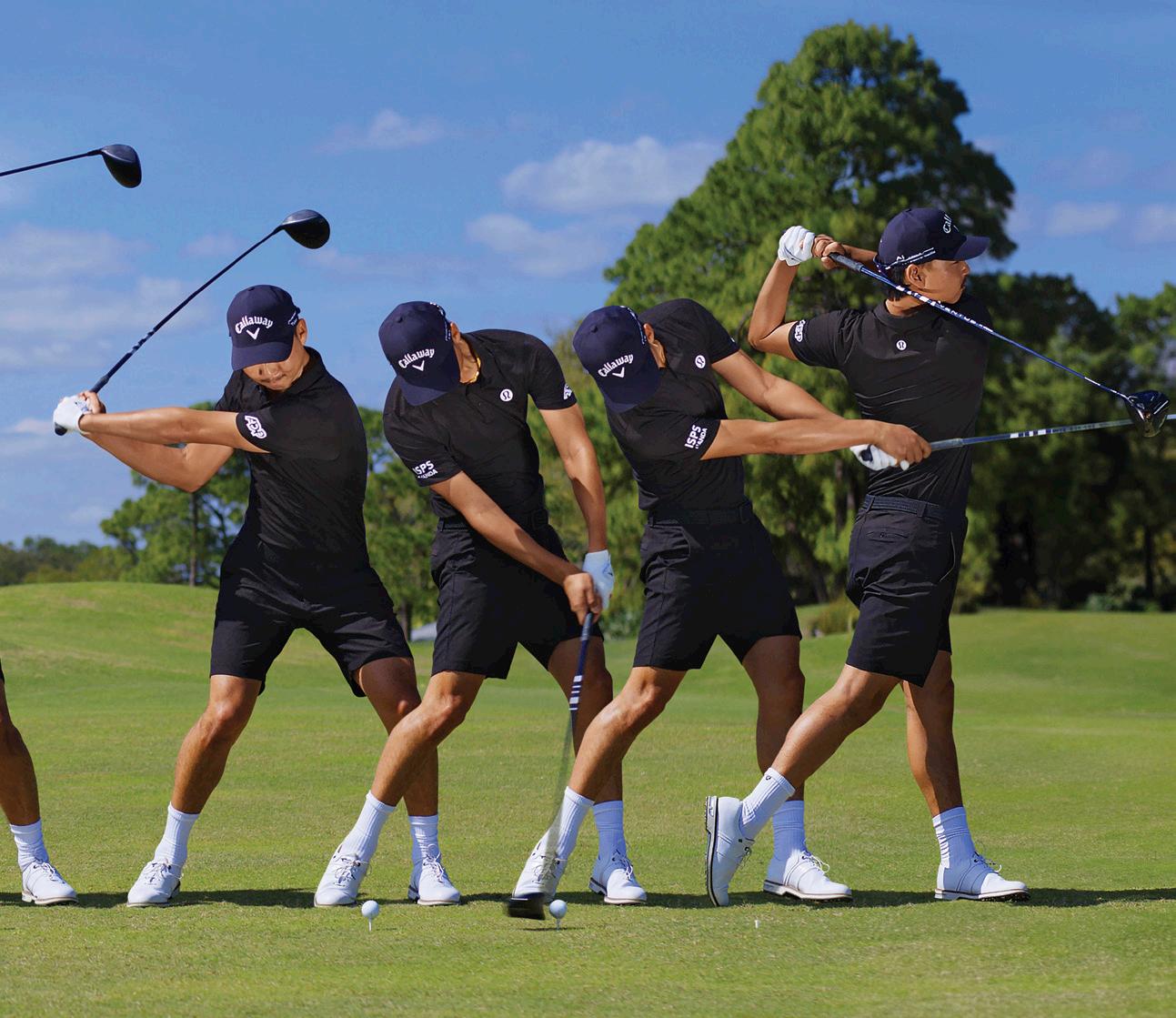
Lee went looking for power sources wherever he could find them. What he quickly discovered was that if he could keep his “arms wide, but compact” on the backswing, he could outdrive just about anyone. Many golfers collapse their arms and let the club fall behind them, which gives off the illusion of a long backswing but robs them of the width they need to create speed. Lee’s hands are far away from his chest at the top, yet the club falls well short of parallel (above, fourth image). This serves as a fail-safe against a narrower backswing, which Min Woo says is his bad tendency.
Ritchie Smith, Lee’s longtime coach, says that his “shoulder structure” plays a pivotal role in limiting the length of his arm swing. As Lee swings back, his left shoulder blade stays down, flat against his rib cage.
“We don’t want the shoulder blades being pulled up and out,” says Smith, who also coaches Min Woo’s sister, twotime major champion Minjee Lee. “Then you have less control where the arms go. You want the muscles between your shoulder blades controlling the motion.”
As his upper body unwinds powerfully through the ball, Lee’s hands
remain extended in front of his chest— as they are on the backswing—and ahead of the ball. The result is an eyepopping amount of forward shaft lean at impact (above, sixth image) and one of the lowest launch angles on tour—only 9.14 degrees. The resulting ball flight is one that can pierce through any wind and looks “effortless,” according to Lee. Though it works for Lee, most instructors would tell you that you’re better served catching the ball on the upswing with the shaft leaning away from the target. That will reduce spin and maximise carry distance for slower swingers.
BY MIKE STACHURA
SO ME OF THE BEST TOUR players have started switching to game-improvement irons, and at retail they outsell players irons 5-to -1, based on Golf Datatech numbers. It’s probably even greater when you go down the range at any club or course in the country and look in people’s bags. Game-improvement irons just make the game easier. What do our Hot List testing numbers say? Using a Rapsodo MLM2 Pro launch monitor, which tracked every shot during testing for the 2024 Hot List, we compared 7-iron shots made by low-handicappers with middlehandicappers who hit both players irons and game-improvement irons. Results show that game-improvementiron shots carried 6.1 yards further, with some players seeing a 16-yard edge.



Game-improvement irons for the win, right? Not so fast. T he average loft of a game-improvement 7-iron was 28 degrees or 5 degrees stronger than the typical 7-iron loft of a players iron. Also, game-improvement irons are designed with wider soles to mitigate fat shots and to provide a higher launch, but we saw limited difference in how high these typical 7-irons flew in both categories. The average apex of a gameimprovement 7-iron was a yard lower, even though the lofts were much stronger. That’s a testament to the technology in game-improvement irons that pushes the centre of gravity lower. Game-improvement irons don’t really reduce dispersion, either. Just as many of our testers had tighter dispersion with the players irons. Why would this be true? If better players are used
to a more compact player iron head, the larger heads of some game-improvement irons might be harder to square at impact, leading to offline misses.
The opinions of our testers were more one-sided. Game-improvement irons were more forgiving based on the vector ratings for Playability, which measures where a particular iron rates on a scale from “more workable” to “more forgiving.” The larger size and wider soles of game-improvement irons foster confidence. In fact, the word “forgiving” appears 121 times in our players comments for game-improvement irons, about twice as often as it appeared in the comments for players irons. By contrast, the word “workable” appears half as often in game-improvement irons as it does in players irons.
The difference may have more to do




CALLAWAY PARADYM AI SMOKE
HL (GAME-IMPROVEMENT)
The face design, tungsten weighting and slightly weaker lofts (than the standard Ai Smoke) foster higher launch for players who carry their 7-irons less than 140 yards.
7-IRON LOFT: 30 DEGREES


CALLAWAY APEX CB (PLAYERS)











This single-piece forging draws on feel but adds tungsten weights to move the center of gravity closer to the centre of the face for optimised ball speed.
7-IRON LOFT: 34 DEGREES
PING BLUEPRINT S (PLAYERS)
Weight saved from an elastomer insert in the long irons is redistributed to help launch and forgiveness. The short irons are forged to emphasise control.
7-IRON LOFT: 33 DEGREES
PING G730 (GAME-IMPROVEMENT)
A heat-treating process strengthens the 17-4 stainless-steel face, allowing it to be thinned. This means more face bend for greater distance and extra height.
7-IRON LOFT: 28 DEGREES

with what better golfer s want to see at address and with their ball flight. Elite professionals are adding gameimprovement irons to the long end of their bags. Brooks Koepka uses an old Nike Vapor Fly Pro 3-iron, and Will Zalatoris plays the Titleist T350 3-iron, prompting him to say, “I have a gameimprovement iron in my bag. So what? I love that thing. It’s my favourite club.”
Chris Baingo, a clubfitting analyst at the Titleist Performance Institute, says he’s seen the change in dramatic terms. “Eighty percent of our players on the PGA Tour are using a blended set of irons,” he says. “ Their long irons are bigger than their short irons, and although amateurs might think they do that because they need more forgiveness, they do it because they want every iron in their bag to be separated by five miles per hour in ball speed. That helps them keep the right apex and the right landing angle to hold the green.”
We suggest all golfers keep an open mind about their set makeup. The right answer for your bag might not be the one you expect.


This chart shows the results of our Hot List player testing for two players irons, a players-distance iron and a game-improvement iron, all from one manufacturer. Tom Mase, retired professor of mechanical engineering at Cal Poly and a member of the Golf Digest Hot List technical panel, used a Rapsodo MLM2 Pro launch monitor to collect data from our 32 player testers. The game-improvement iron produced more carry for all our testers but its dispersion wasn’t necessarily tighter.




TAYLORMADE P7MC (PLAYERS)
This compact cavity-back design features a machinemilled face and grooves for more consistency. A thin topline, minimal o set and a narrow sole allow golfers to shape their shots.
7-IRON: 34 DEGREES













TAYLORMADE QI (GAME-IMPROVEMENT)
The iron uses a composite badge on the back to help reinforce a thin, flexing face. This saves weight that is redistributed to dial in the centre of gravity.
7-IRON LOFT: 28 DEGREES
TITLEIST T100 (PLAYERS)
The cavity uses dense tungsten (about 1.5 times heavier than lead) to place the centre of gravity on each iron without sacrificing the forged feel. The CNC facemilling improves consistency.
7-IRON LOFT: 34 DEGREES
TITLEIST T350 (GAME-IMPROVEMENT)
The hollow design contains a polymer-core structure that improves ball speed and feel. Tungsten weights in the heel and toe aid both stability and ball speed.
7-IRON LOFT: 29 DEGREES

AGE 24
LIVES
Orlando, Florida
STORY
Has won two LPGA Tour events. Was the 2021 LPGA Rookie of the Year.
SUBHEADLINE HERE
As a professional you hit a lot of shots, but some stand out. For me the 6-iron I hit on the 16th hole in the final round of the 2024 Honda LPGA Thailand sticks out. It was a tough par 3 of 176 yards, and I told myself to look at the target just like a sniper, and I was able to pull it off, make birdie and seal the win with a birdie on 18.
—WITH TOD LEONARD
CLUB YARDS * Driver 255 3-Wood 235 5-wood 215 4-Iron 193 5-Iron 185 6-Iron 170 7-Iron 160 8-Iron 150 9-Iron 140



SPECS Titleist TSR2, 8°, Mitsubishi Tensei 1K Pro Blue 50 S shaft. The TSR2 has a larger head that’s wider heel to toe than the TSR3. It’s more forgiving compared to the other TSR models. I play an 8-degree head that lowers my spin, but I add a little loft that makes it easier to draw the ball.

SPECS Titleist Vokey SM10 (50°, 56°, 60°); Nippon NS Pro Modus3 115 shafts.
SPECS TaylorMade SIM2 Ti, 15°, Mitsubishi Tensei Blue 60 S shaft; Titleist TSR2, 18.0, Mitsubishi Tensei 1K Pro White 60 S.
Finding the right 3-wood is di cult because I spin the ball a lot. Plus, hitting it o a tee and the ground is a hard combo to fit, too. This SIM2 Ti reduces spin. It’s good o the tee, but I can hit it o the fairway, too. The lead tape on the bottom helps

SPECS Titleist T200 (4-iron), Graphite Design Tour AD DI-85 S; Titleist T100 (5-iron through PW), Nippon NS Pro 950GH S shafts, Iomic 2.3 grips. I can flight the ball any way I want with the T100s. They get through the turf better than the cavity-backs I was using. The T200 4-iron gets me more height. It’s one of my favourite clubs in the bag.

SPECS Bettinardi Studio Stock 3 tour prototype; 34 inches, 3°.
THE REAL FEEL
I need to hear a good sound from the golf ball. I need to feel it, too. The Pro V1x just gives me a little bit more feedback. It spins really well around the green, too.
ON-COURSE EATS

I just put the SM10s in the bag this year. I play a variety of shots with my wedges, and these are very versatile. I have some cool stampings on my wedges. The “Balance” on the 60-degree is to remind me that having balance in all aspects of your life is a important thing.
I’ve used di erent putters, but this Bettinardi has been with me a long time. It’s comfortable under pressure. I have a Scotty Cameron T5 I’ve been practicing with, but I need more reps with it.
The stuff I eat on the course is pretty basic. I tend to go with protein bars, one bit of electrolytes per round and bananas. All of those help keep my energy up while I’m playing.
CHARACTER TRAIT
These are my favourite Sanrio characters, which is kind of like Hello Kitty, but Hello Kitty was too girly for me with all the pink. I loved this character, called Kuromi, when I was younger.








BY DAVID MCPHERSON
Regardless of how many Canucks make the International team, the Presidents Cup’s return to The Royal Montreal Golf Club Sept. 26-29 coincides with Canadian golf having a moment.
This season Nick Taylor won the WM Phoenix Open and Taylor Pendrith the CJ Cup Byron Nelson. As of this writing, Mackenzie Hughes has three top-10s and Corey Conners two, including a T-9 at the U.S. Open. Throw in Adam Hadwin and Adam Svensson, and that’s six Canadians in the top 100 of the World Golf Ranking. On the women’s side, we have 13-time LPGA Tour winner Brooke Henderson. Beauty, eh?
For a country of just 39 million (the population of California) with a short golf season, Canada is punching above its weight. Our pandemic bump is real. Canadians played 74 million rounds in 2023, up from 57 million in 2019, but the real shift goes back two decades. The impact of Tiger Woods’ 1997 Masters triumph for golf culture is immeasurable, but Mike Weir’s 2003 Masters win was
comparably forceful in Canada.
“We were so proud, and it was so inspiring,” says PGA Tour veteran David Hearn, now 45. “Mike became the model for how to practice, prepare and play.” Says Graham DeLaet, who retired in 2022 to become a golf analyst for Canadian sports broadcaster TSN, “Weir’s Masters win was the biggest factor in me wanting to turn pro after college.”
Crucially, Weir’s win spurred the nation’s golf governing body, Golf Canada, to launch a formal objective: to help 30 Canadians reach the PGA Tour and LPGA Tour by 2032. The organisation created a year-round performance program that combined fitness, nutrition, psychology, technique and international competition. This included a structure for identifying promising juniors plus housing and training facilities in the United States for pro players.
Canadian golfers play practice rounds at most PGA Tour stops together and often share accommodations. When Ontarians Conners and Hughes play practice rounds with Hadwin and
NORTH STARS
Canada’s Nick Taylor, Brooke Henderson, Mackenzie Hughes, Adam Hadwin and Corey Conners.
Taylor (both from Canada’s western provinces) it’s usually an East versus West match.
“I give a lot of credit to Golf Canada for helping me get to the next level in my career,” Conners says.
“Setting up the correct environment and culture has been key over the past 15 years, along with getting the right people on the bus to take advantage of those opportunities,” says Derek Ingram, head coach for Team Canada’s National Men’s Amateur and Young Pro Teams, who coaches Conners and Pendrith.
Of course, you can’t talk Canadian team spirit without mentioning hockey. Conners played competitive hockey during his formative athletic years, and Pendrith was an avid hockey player who took up golf only at 12. Henderson was a standout goalie on her local junior travel team. The mettle a netminder requires no doubt helped her ability to perform under pressure, and the parallels between the kinematic sequence of a high-net slapshot and a 300-yard drive are well documented.
A recent study by a Queen’s University kinesiology professor, specific to hockey but that can apply to golf, said athletes from small towns are statistically at a greater advantage to succeed in professional sports—dubbed the “birthplace effect.” The basic theory is that in small towns, early specialisation in a single sport is less common because communities often focus on training and development as opposed to winning. Many of Canada’s best golfers grew up in small or medium-size towns. Hughes is from Dundas, Ontario (population 24,000), Conners is from rural Listowel (7,500) and Henderson is from Smiths Falls (9,200).
There’s a fair chance that more than two Canucks will tee it as members of the Internationals. With Weirsy as captain, maybe he’ll flip a Toonie or Loonie to finalise his picks, or, between sips of a Tim Hortons double double, simply say, “Sorry, bud” to various golfers ranked higher than his compatriots and add more homegrown talent to his squad. O Canada, we stand on the tee for thee.











